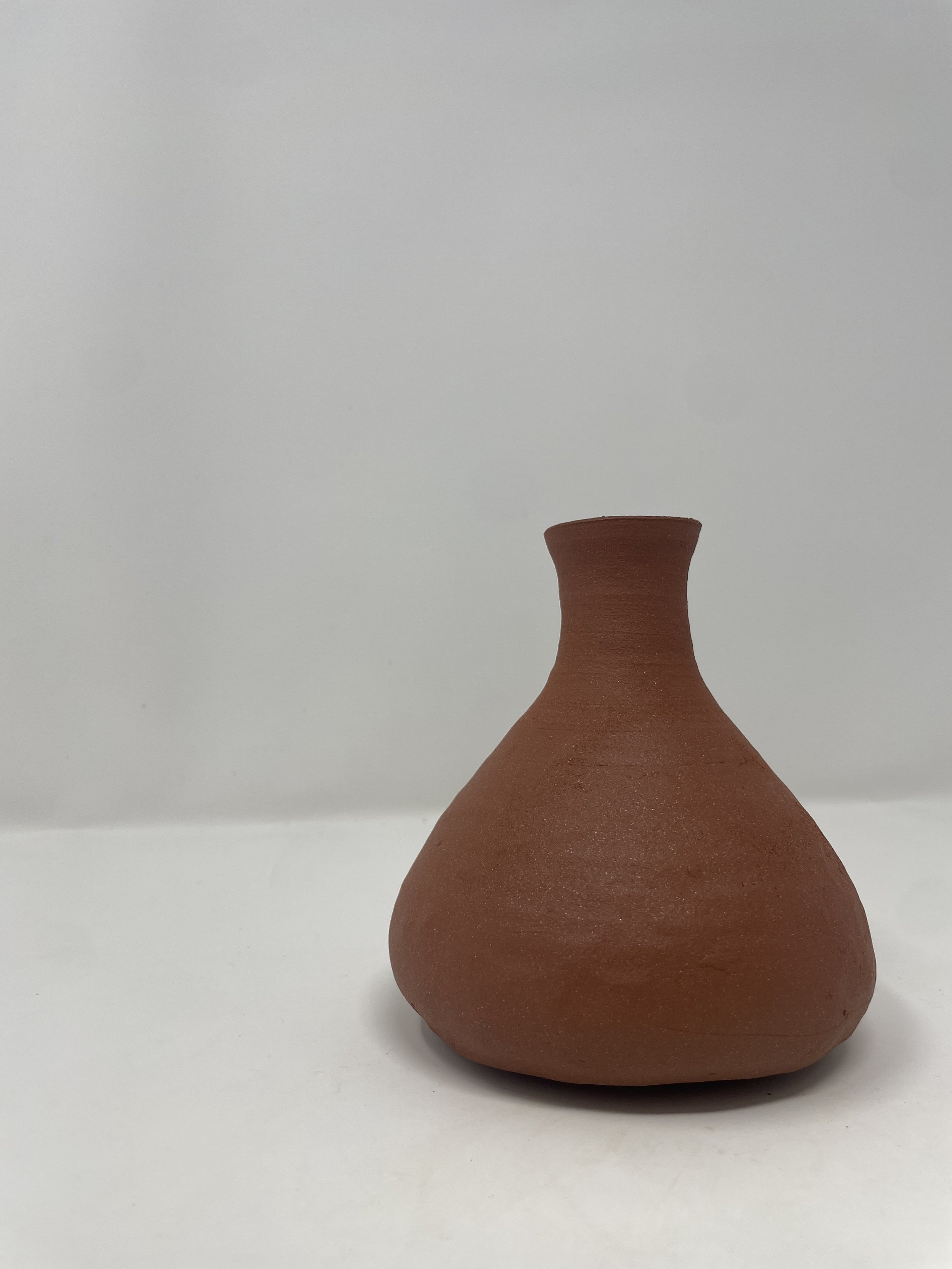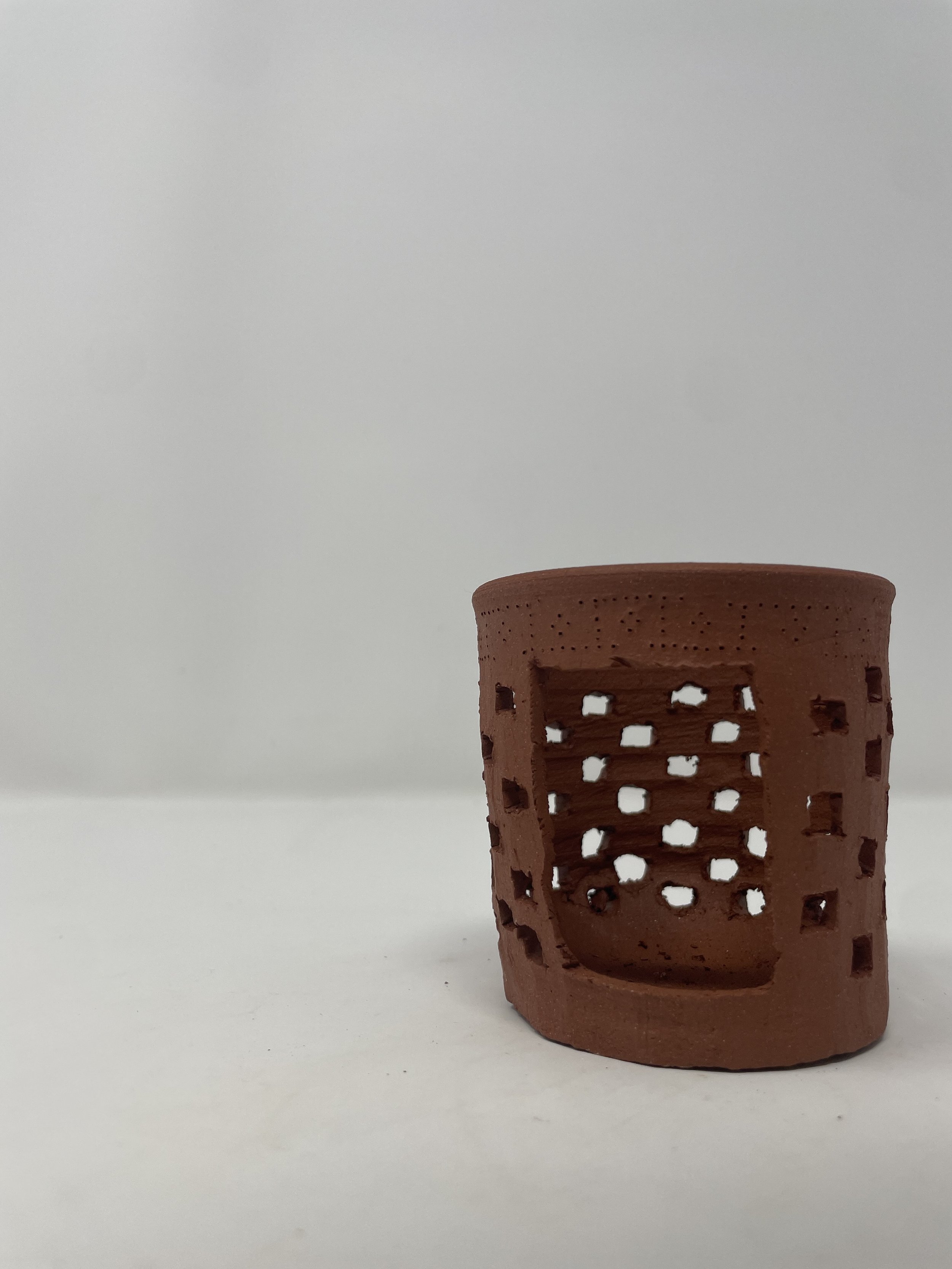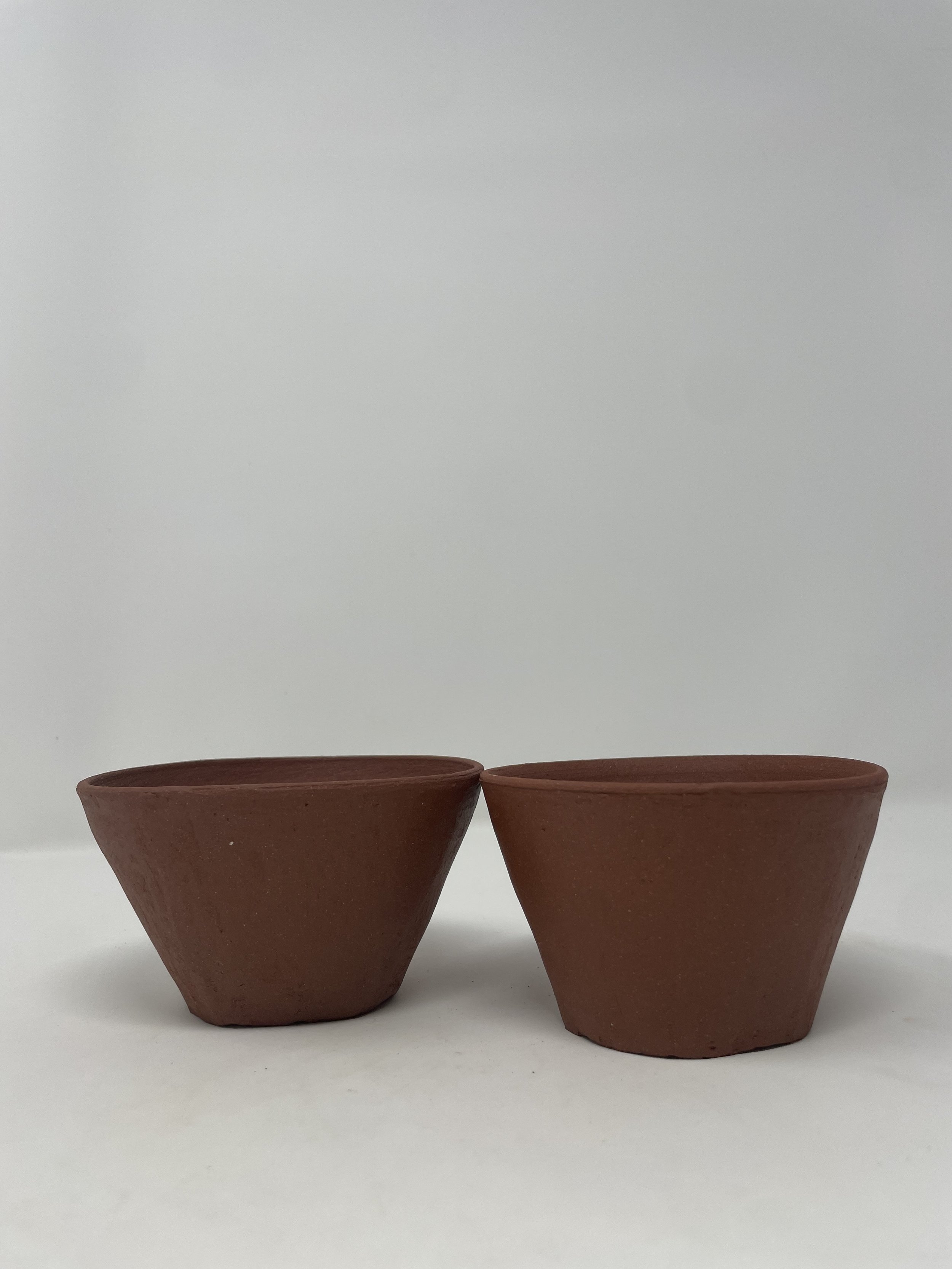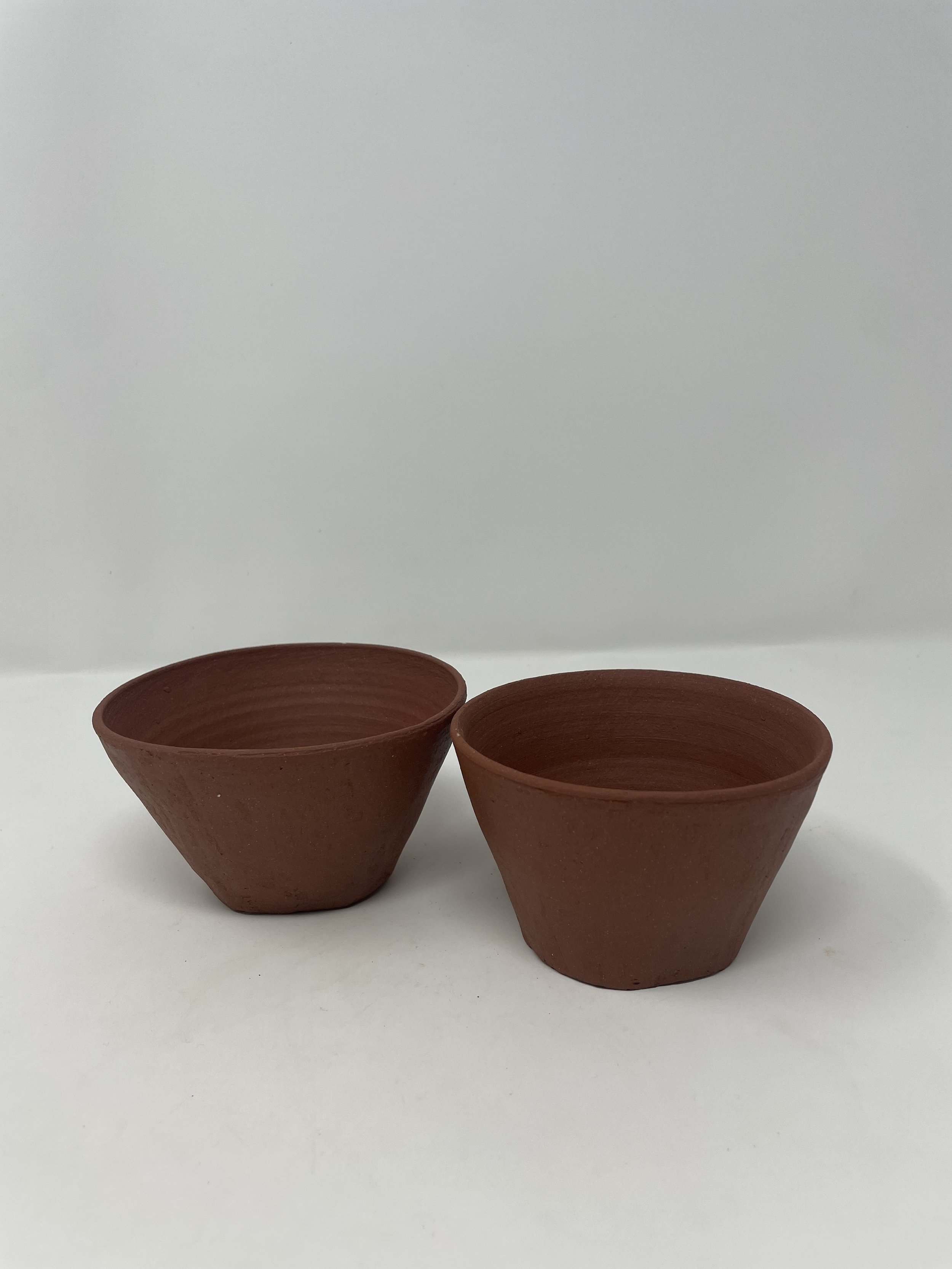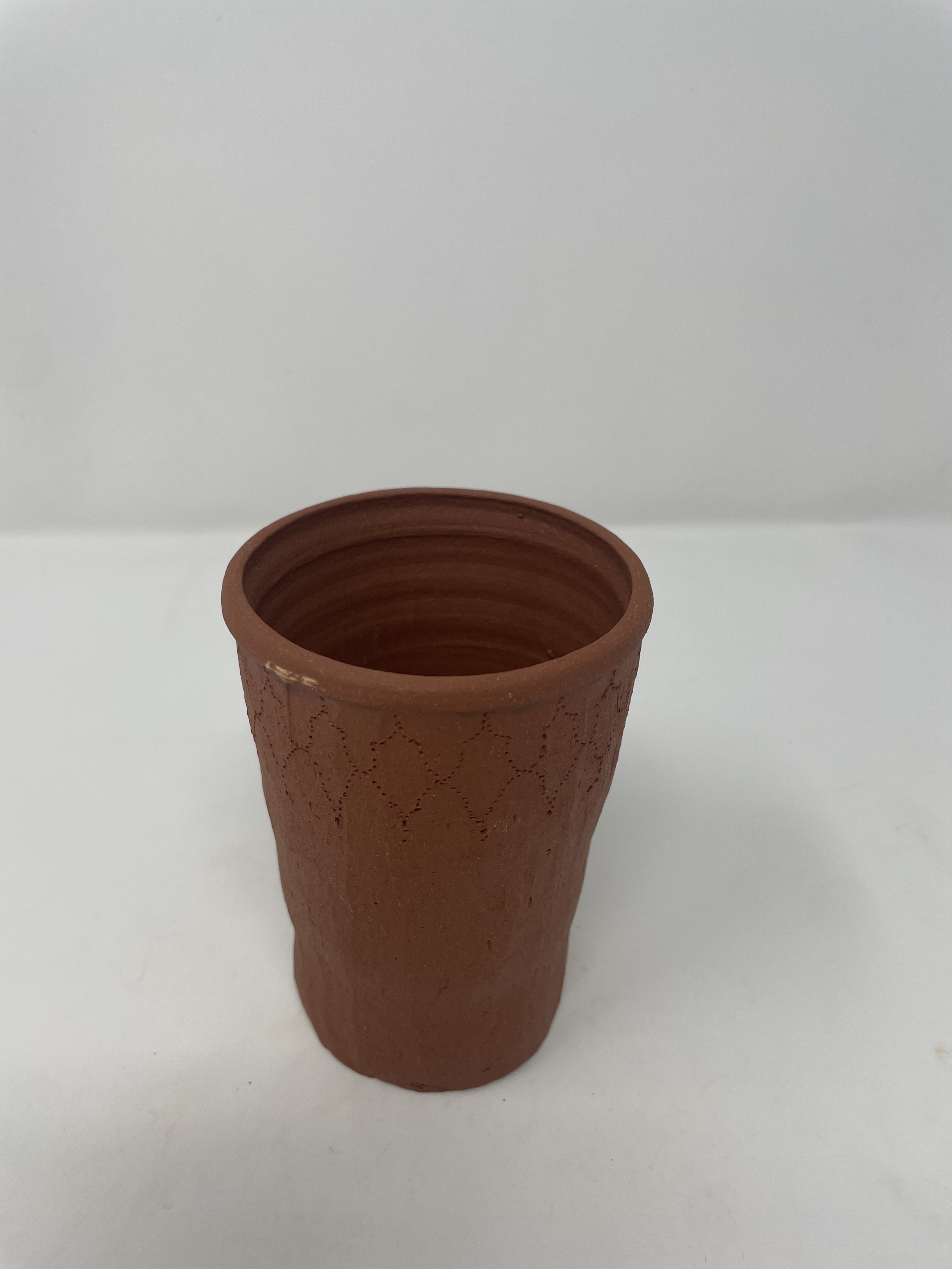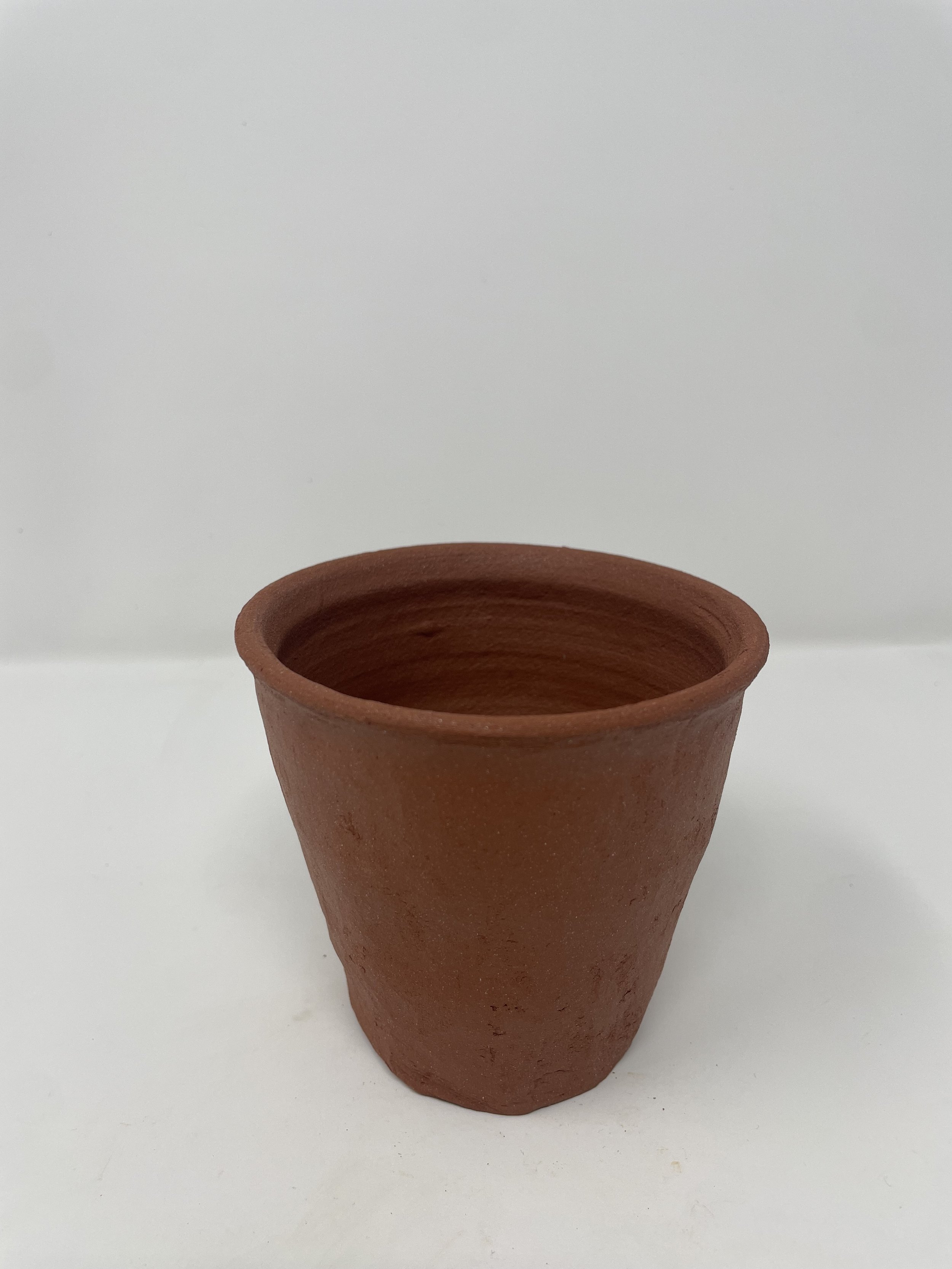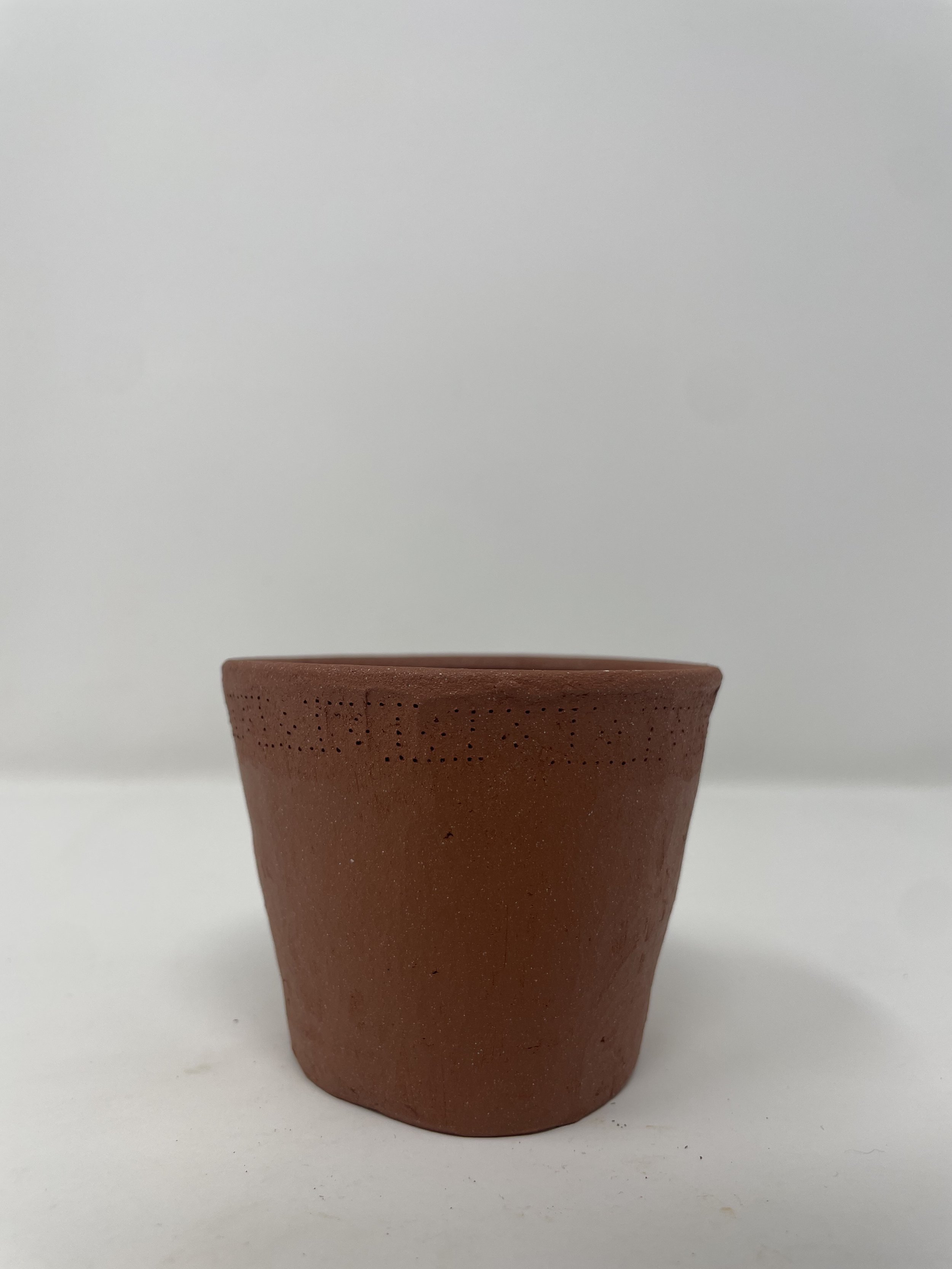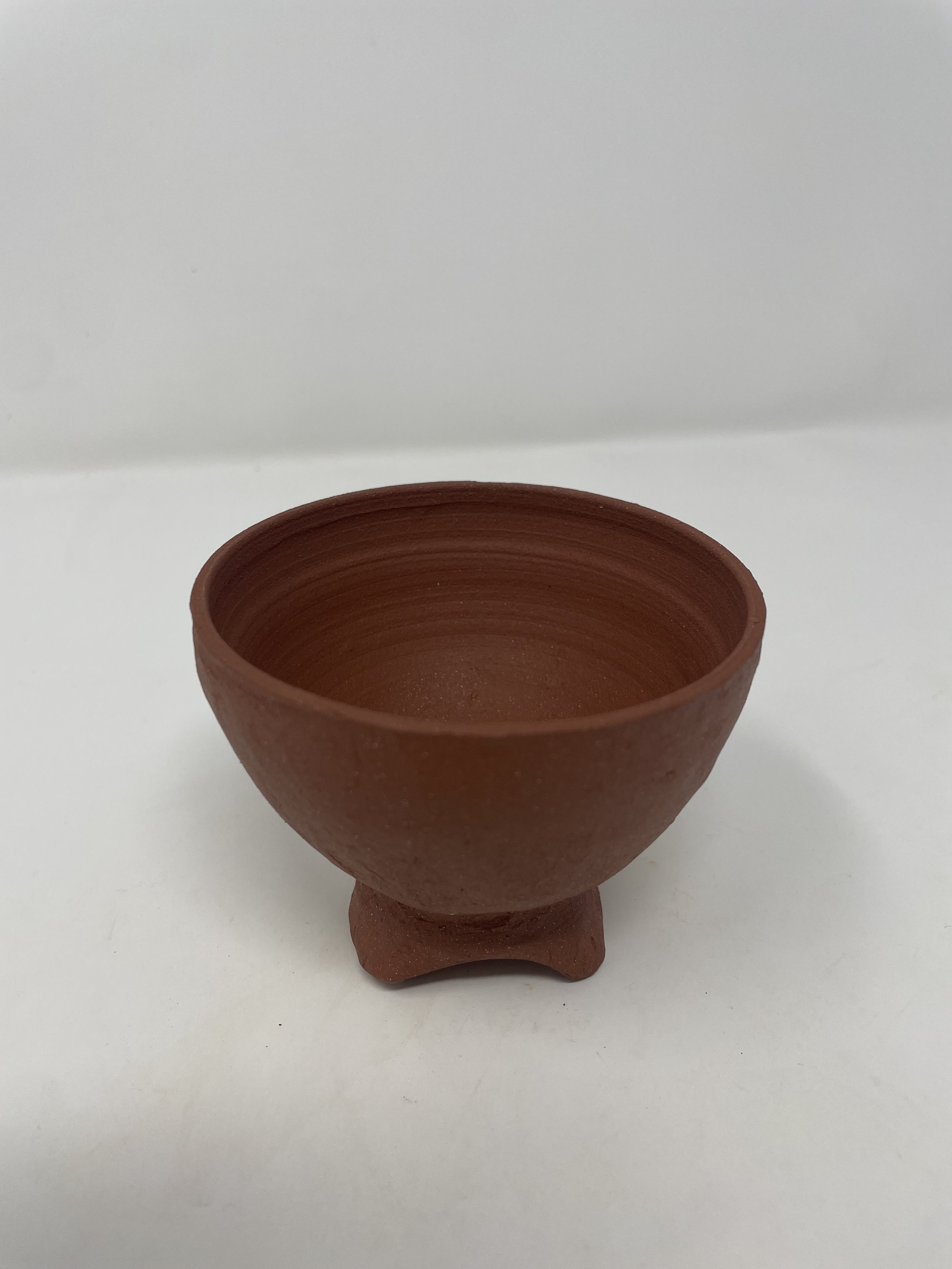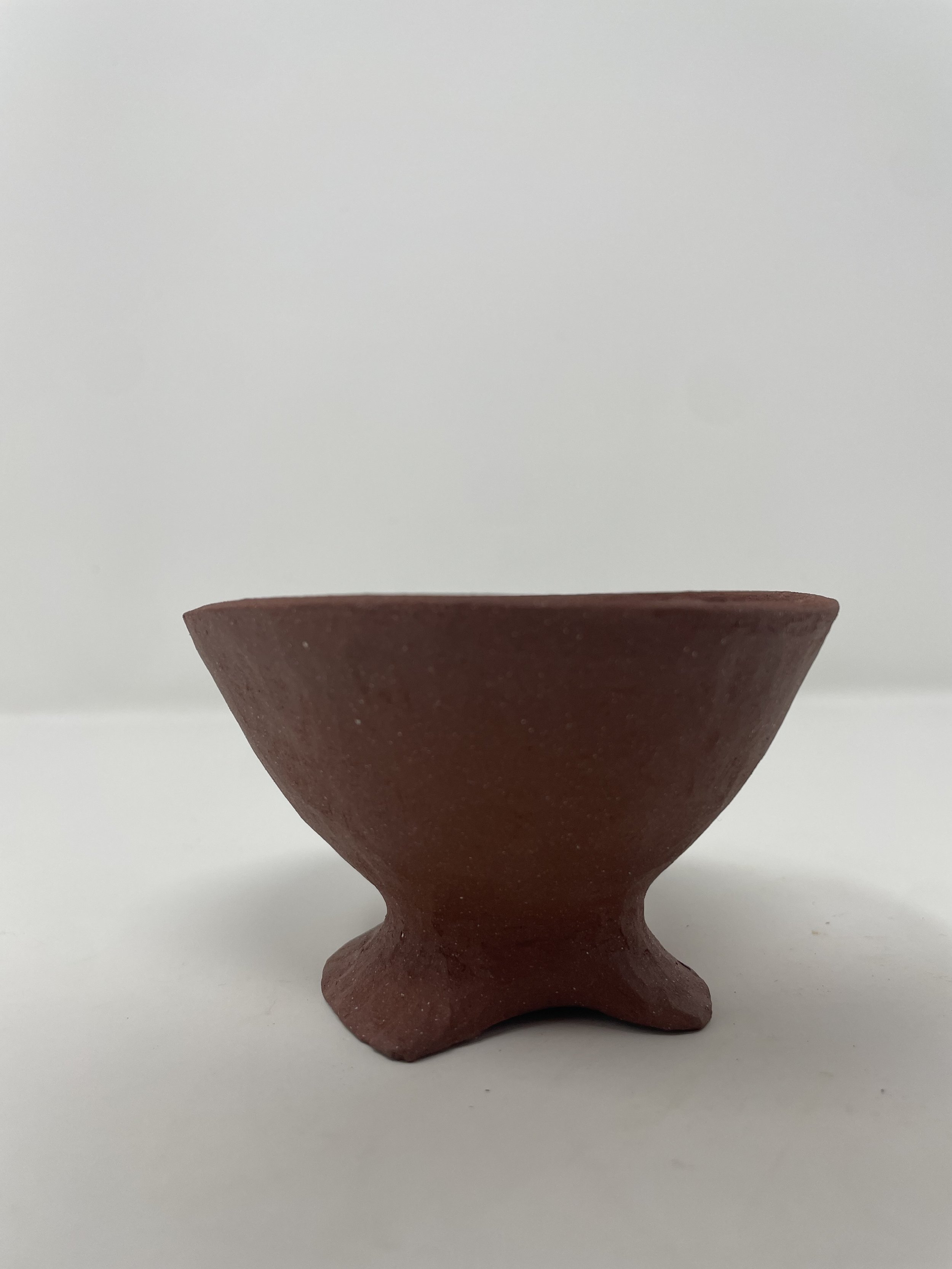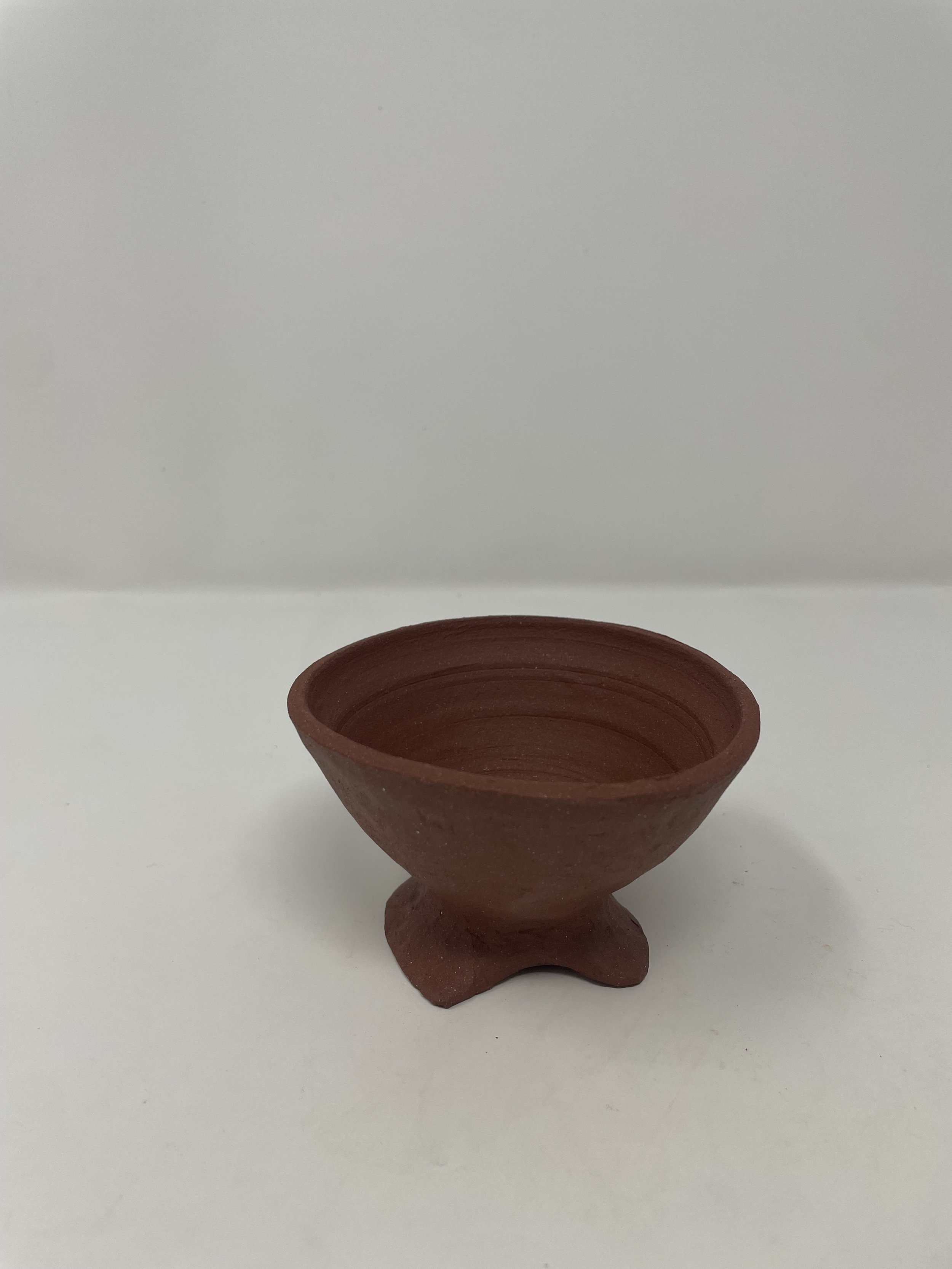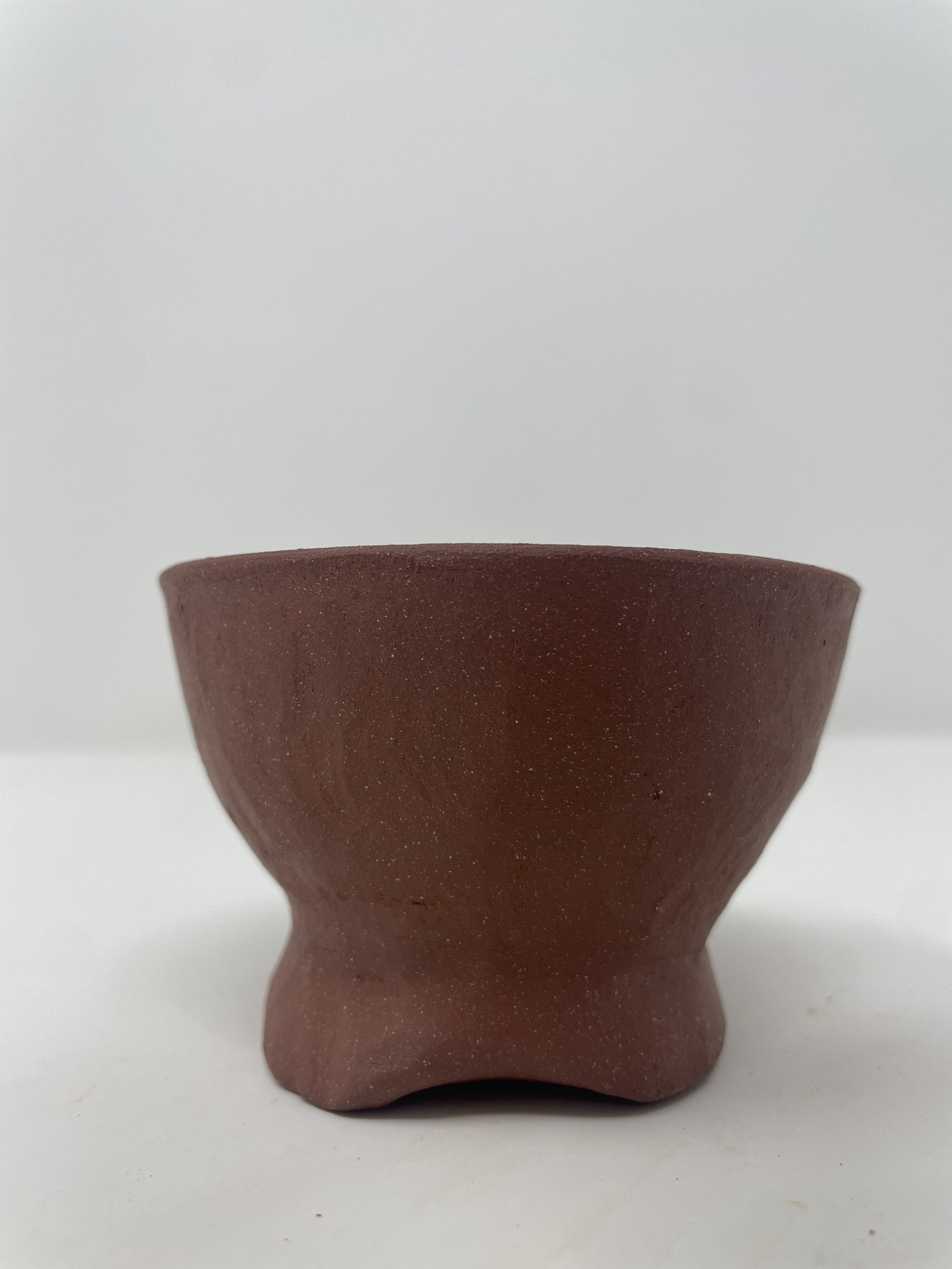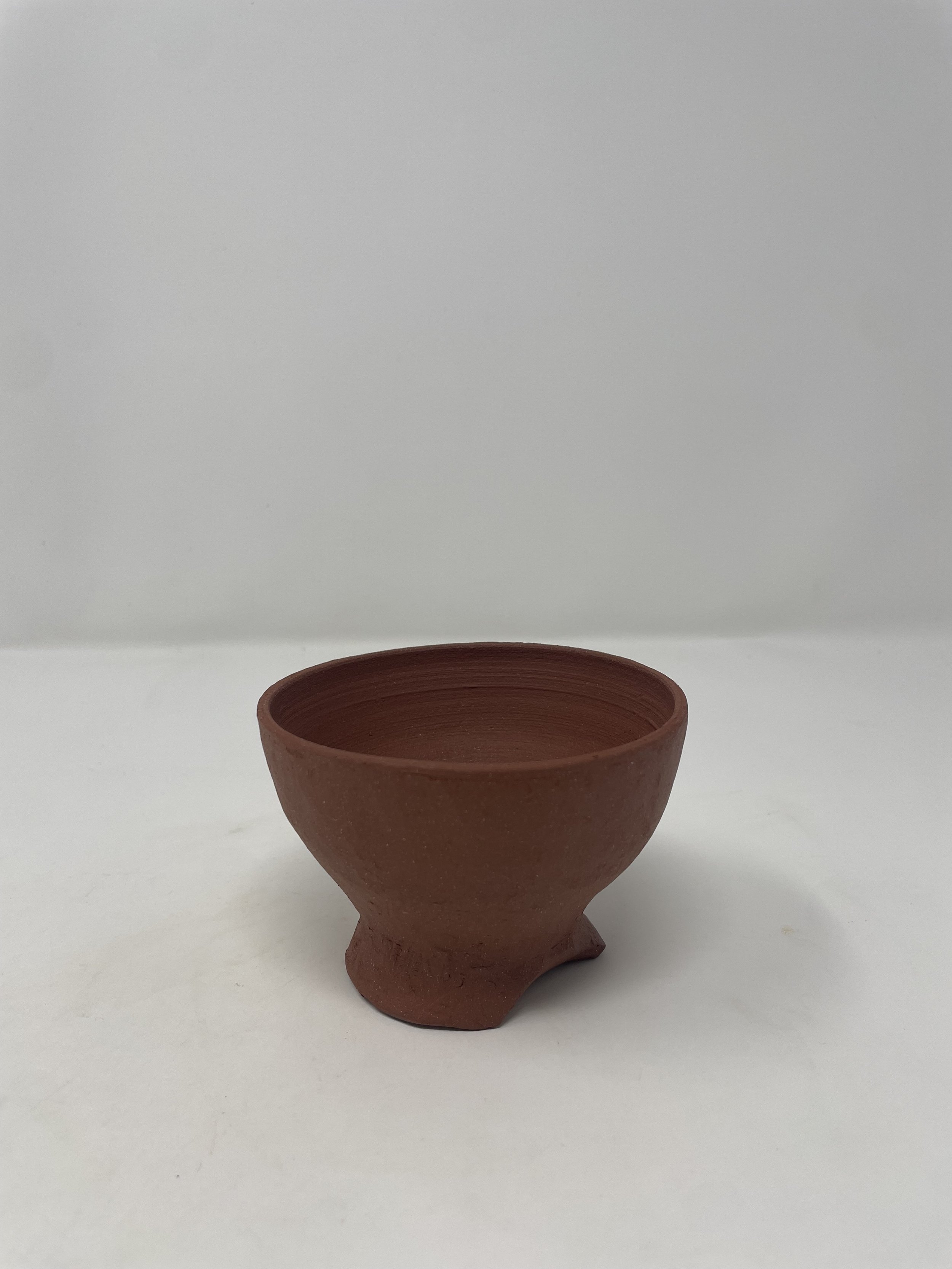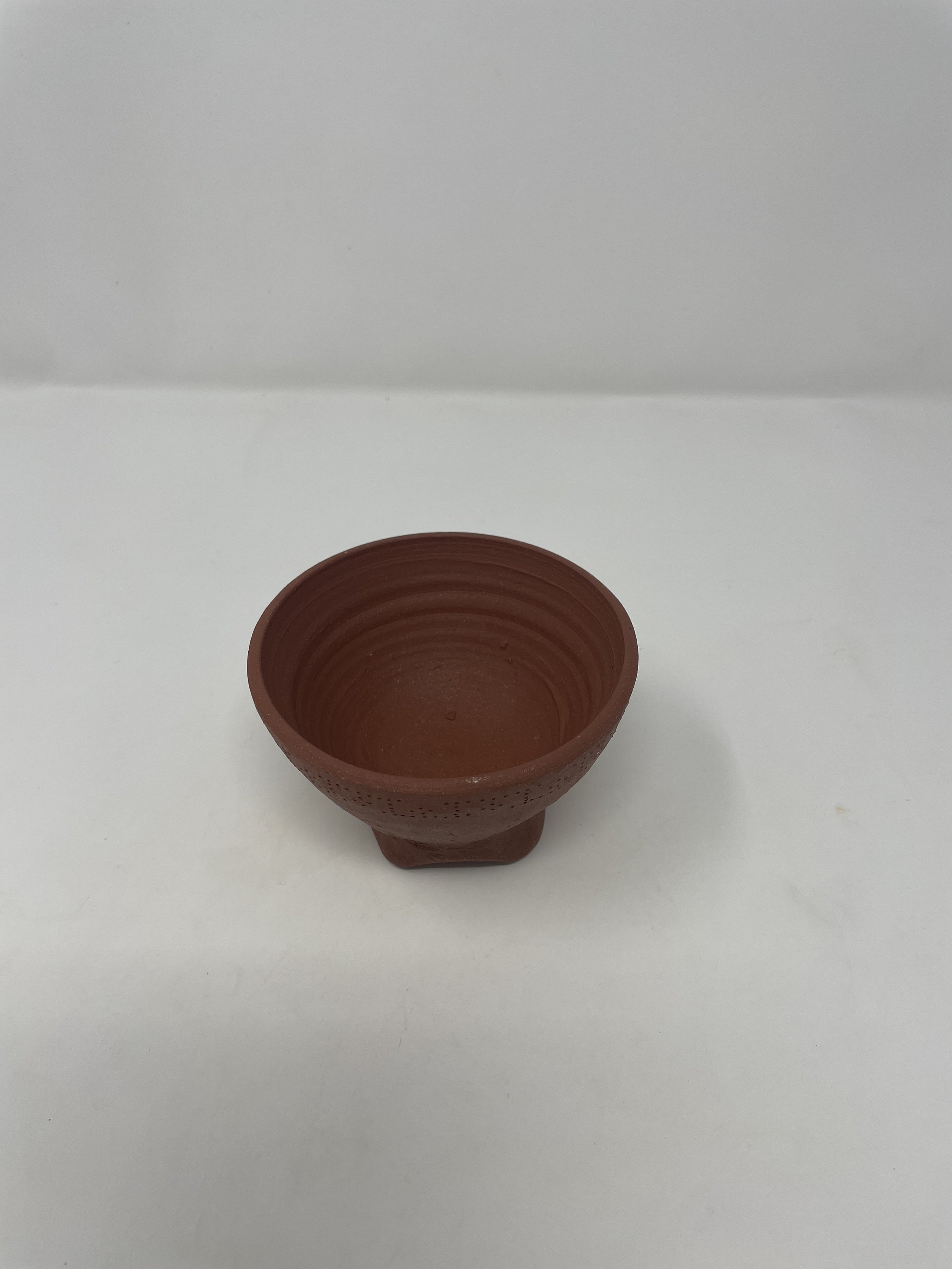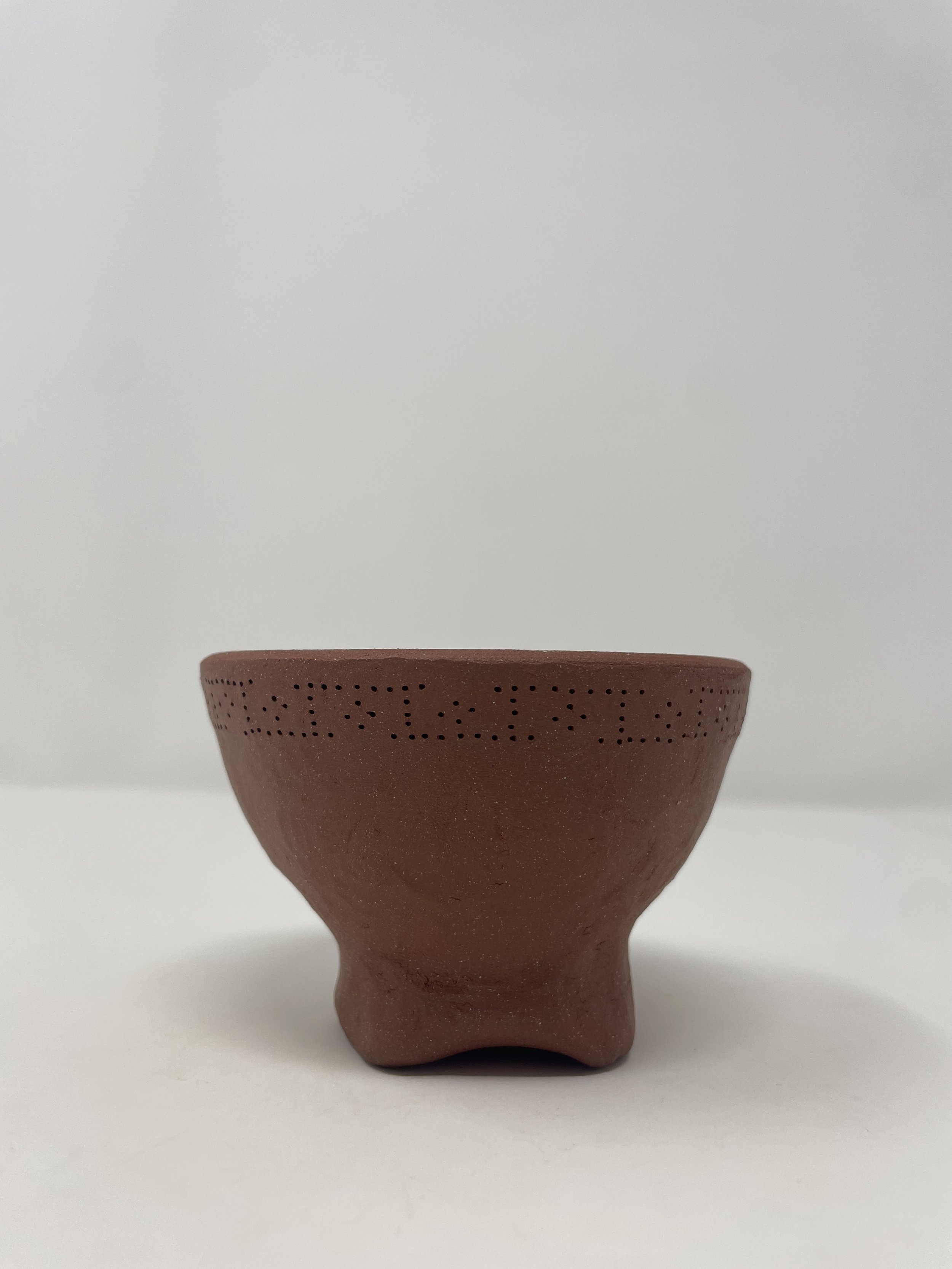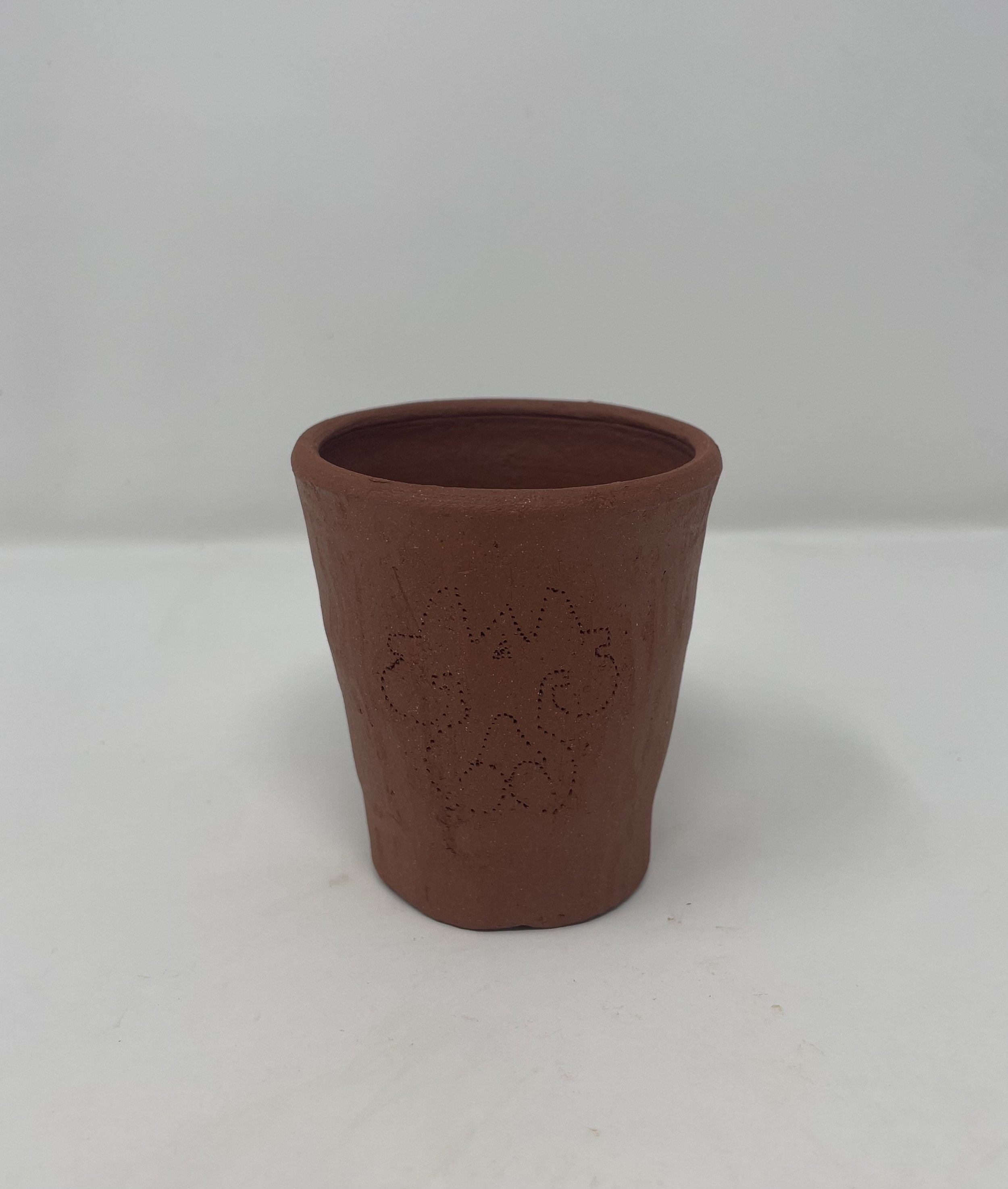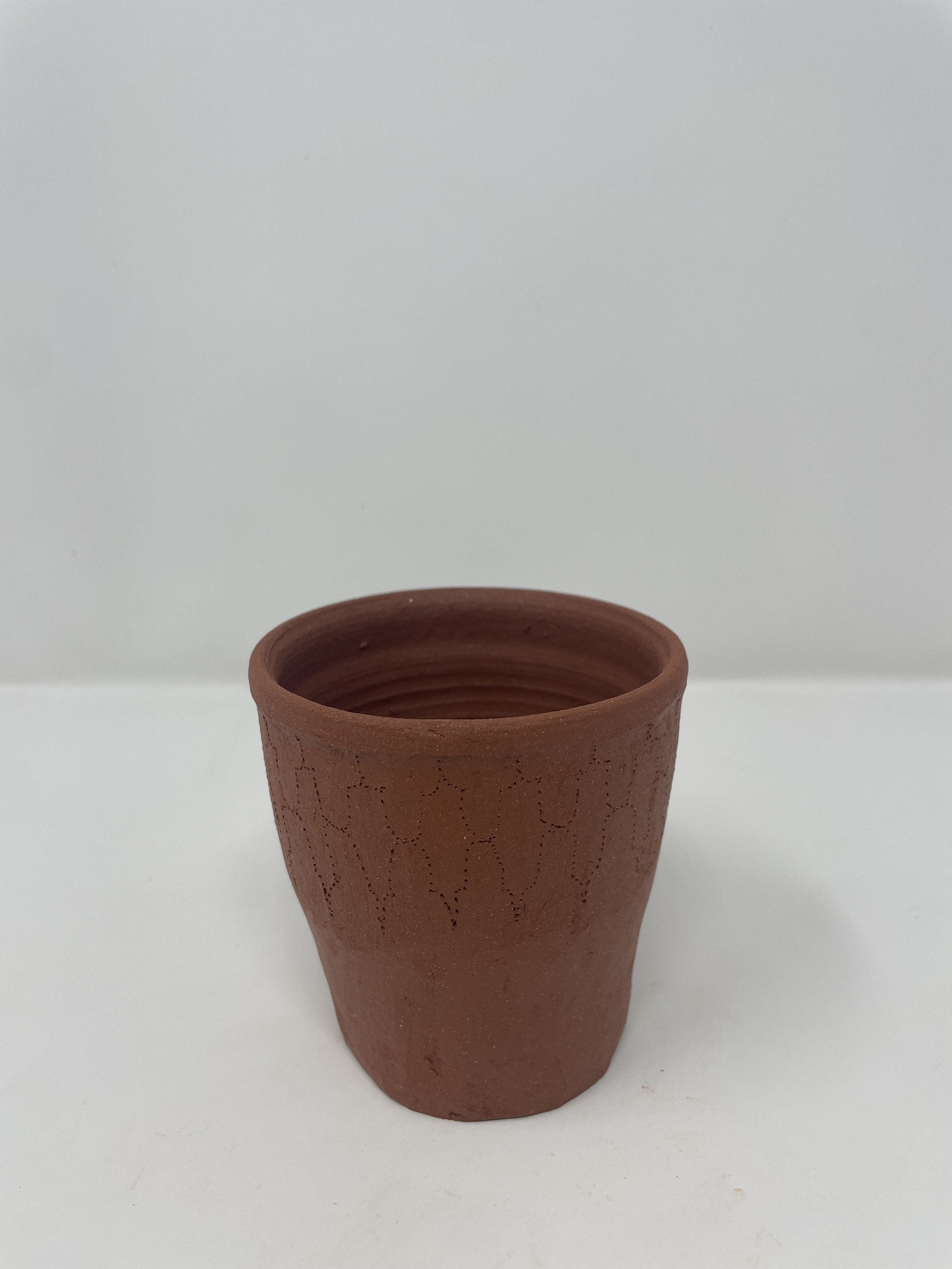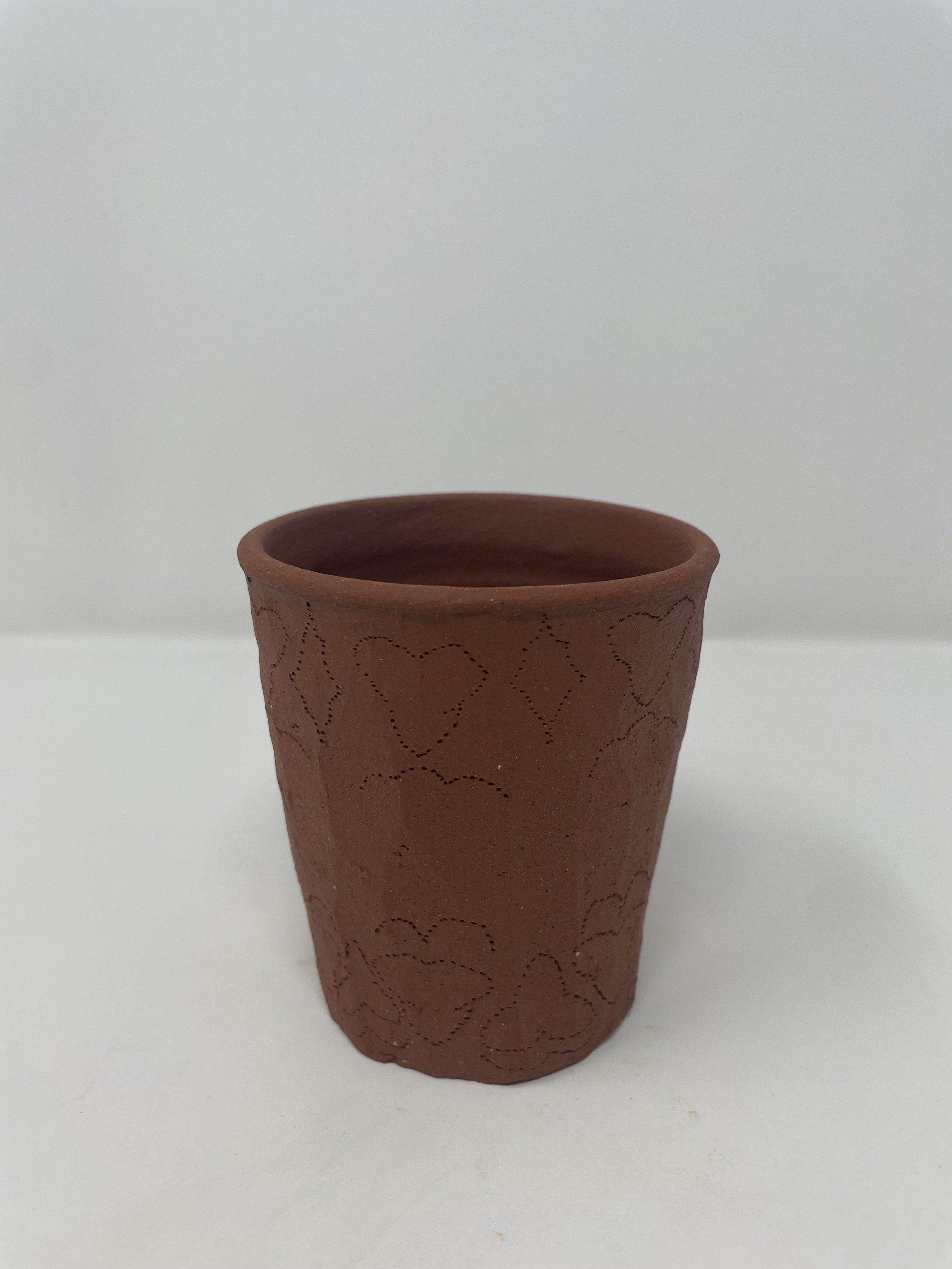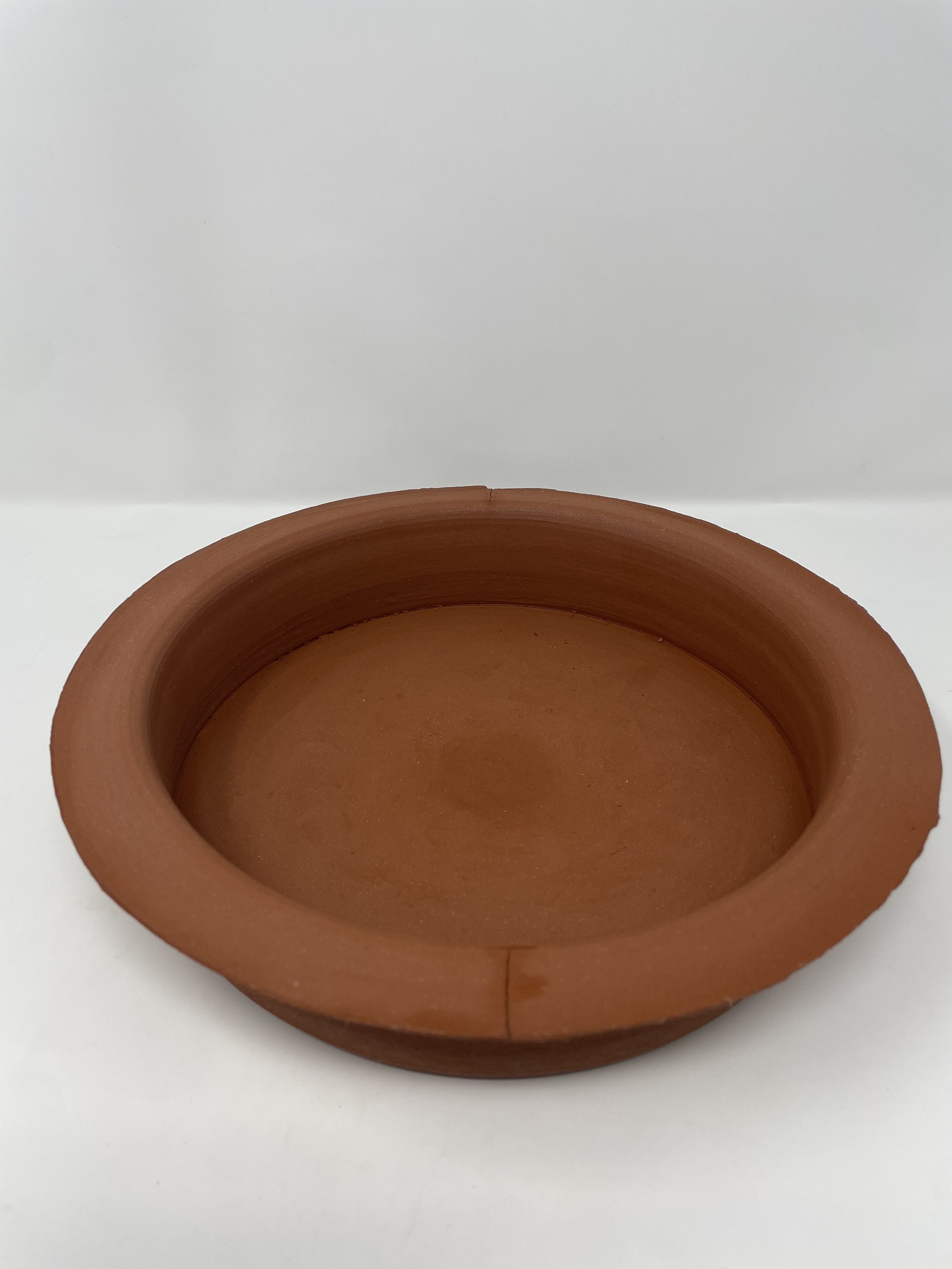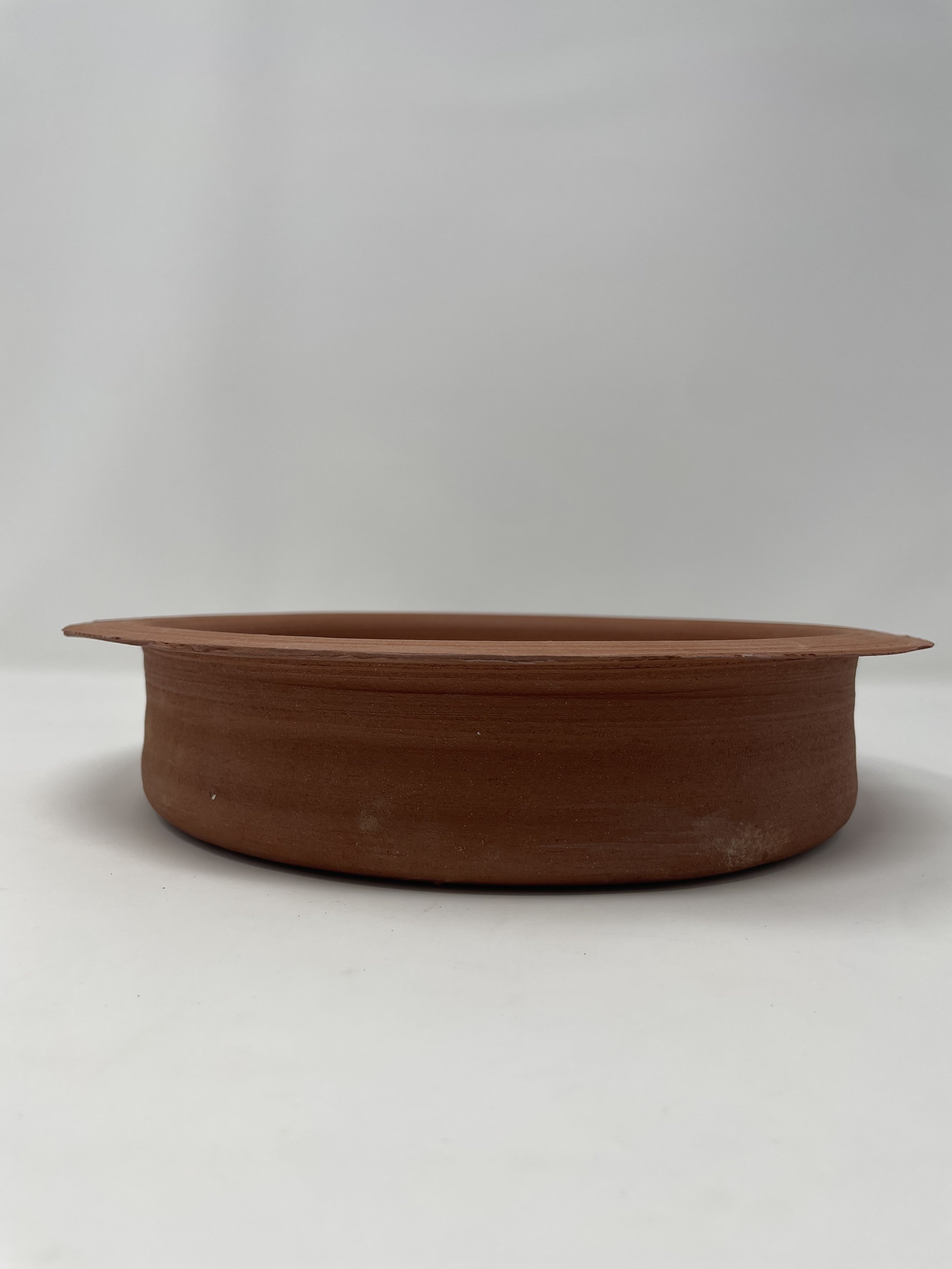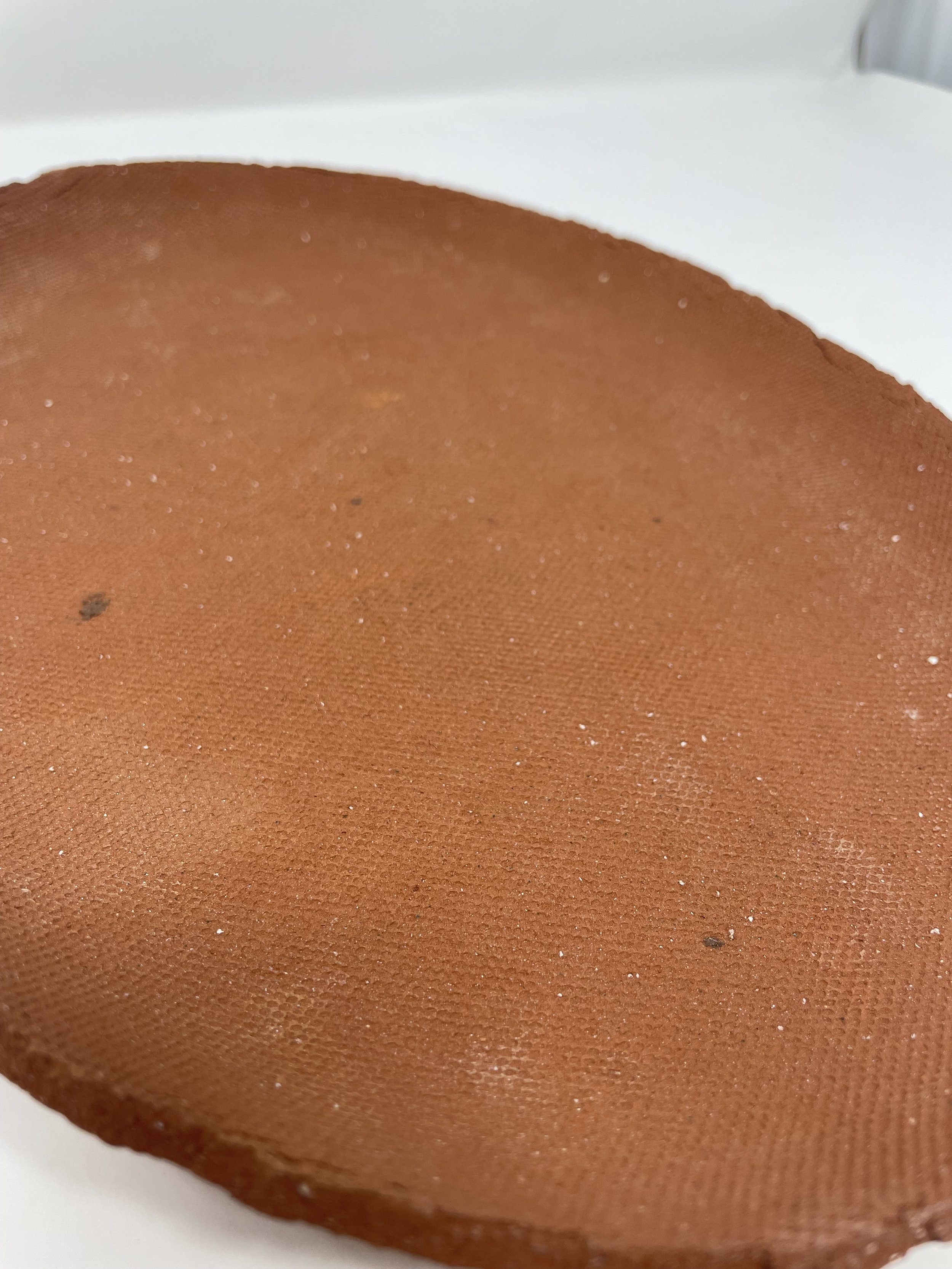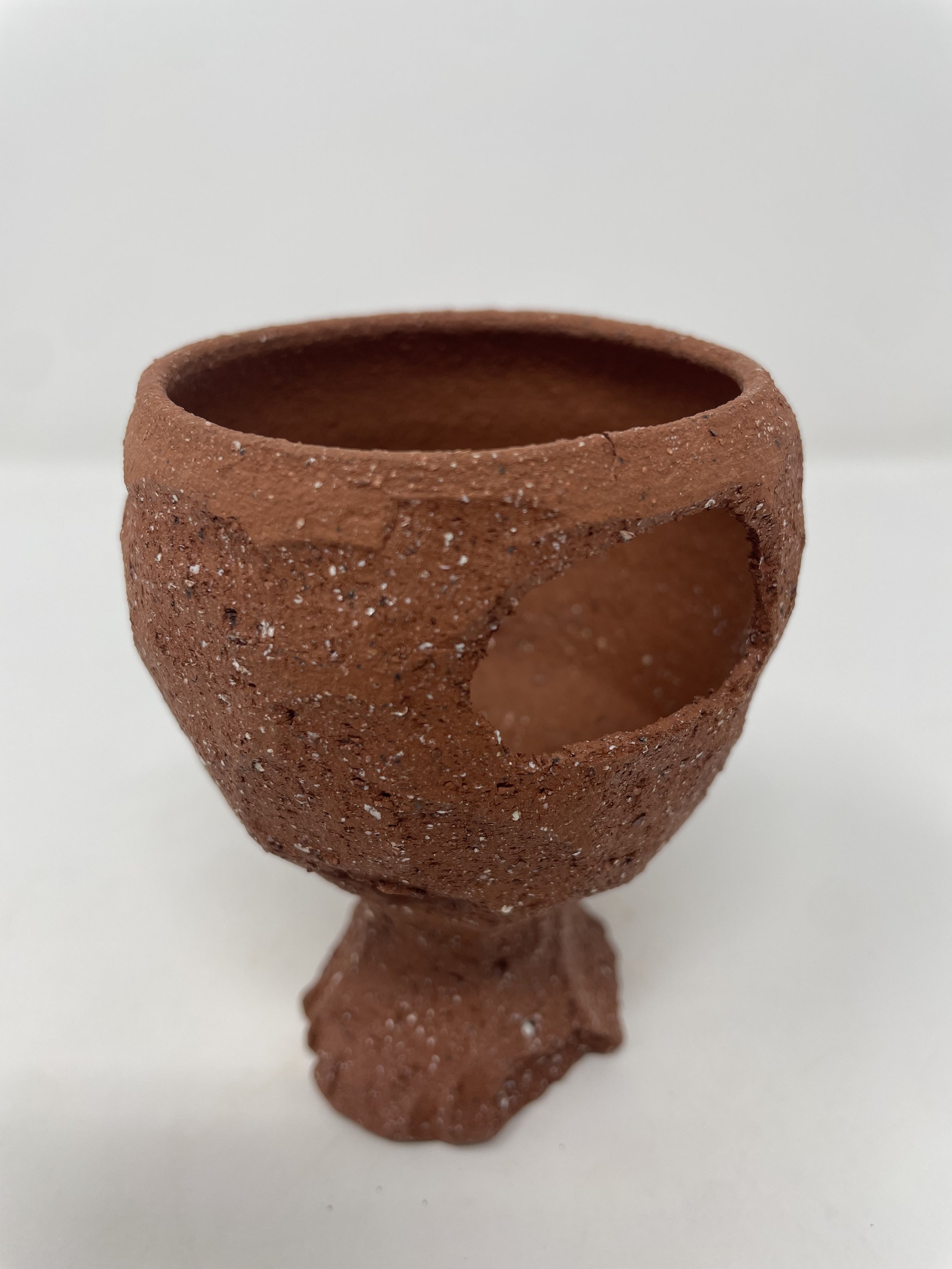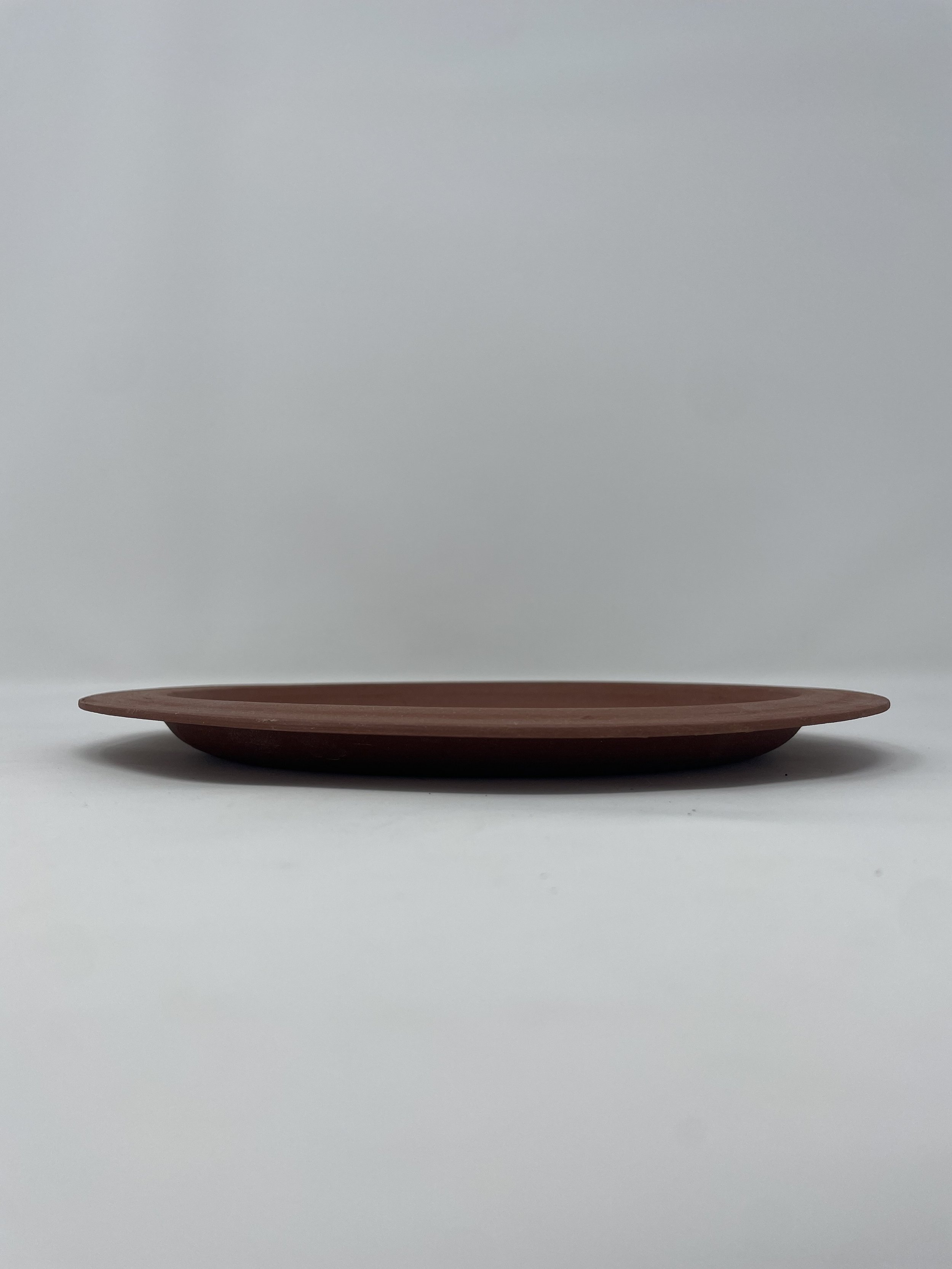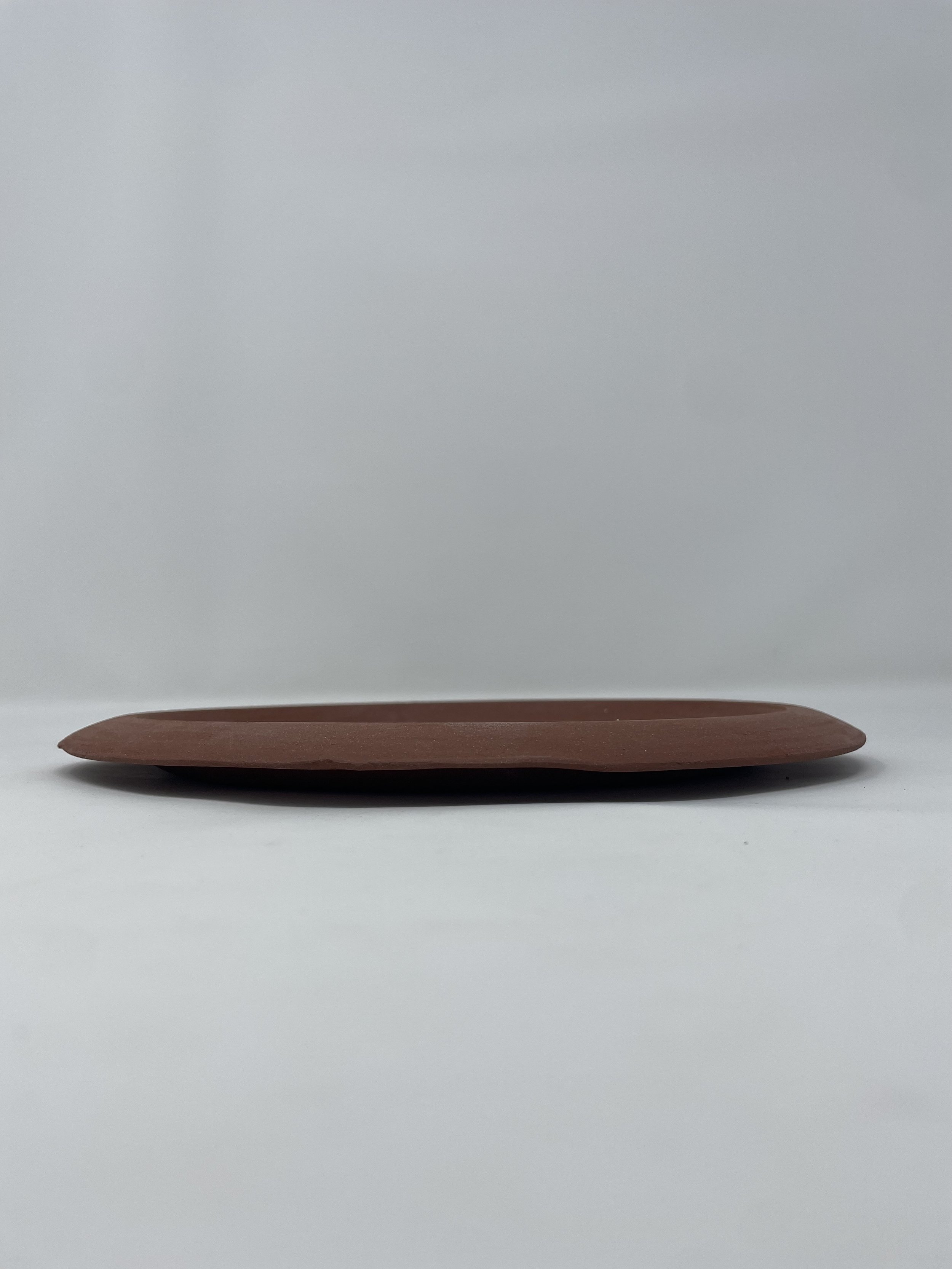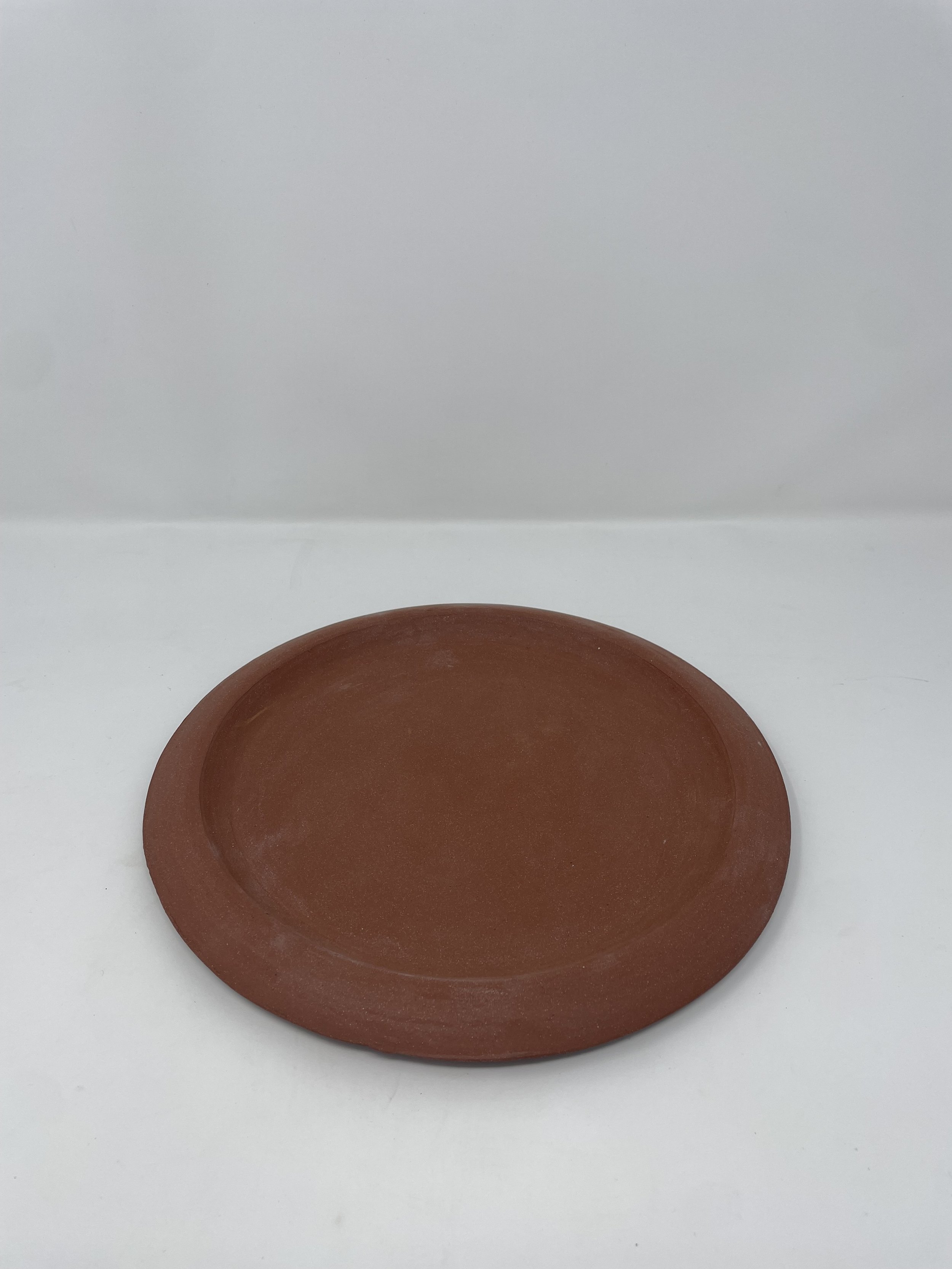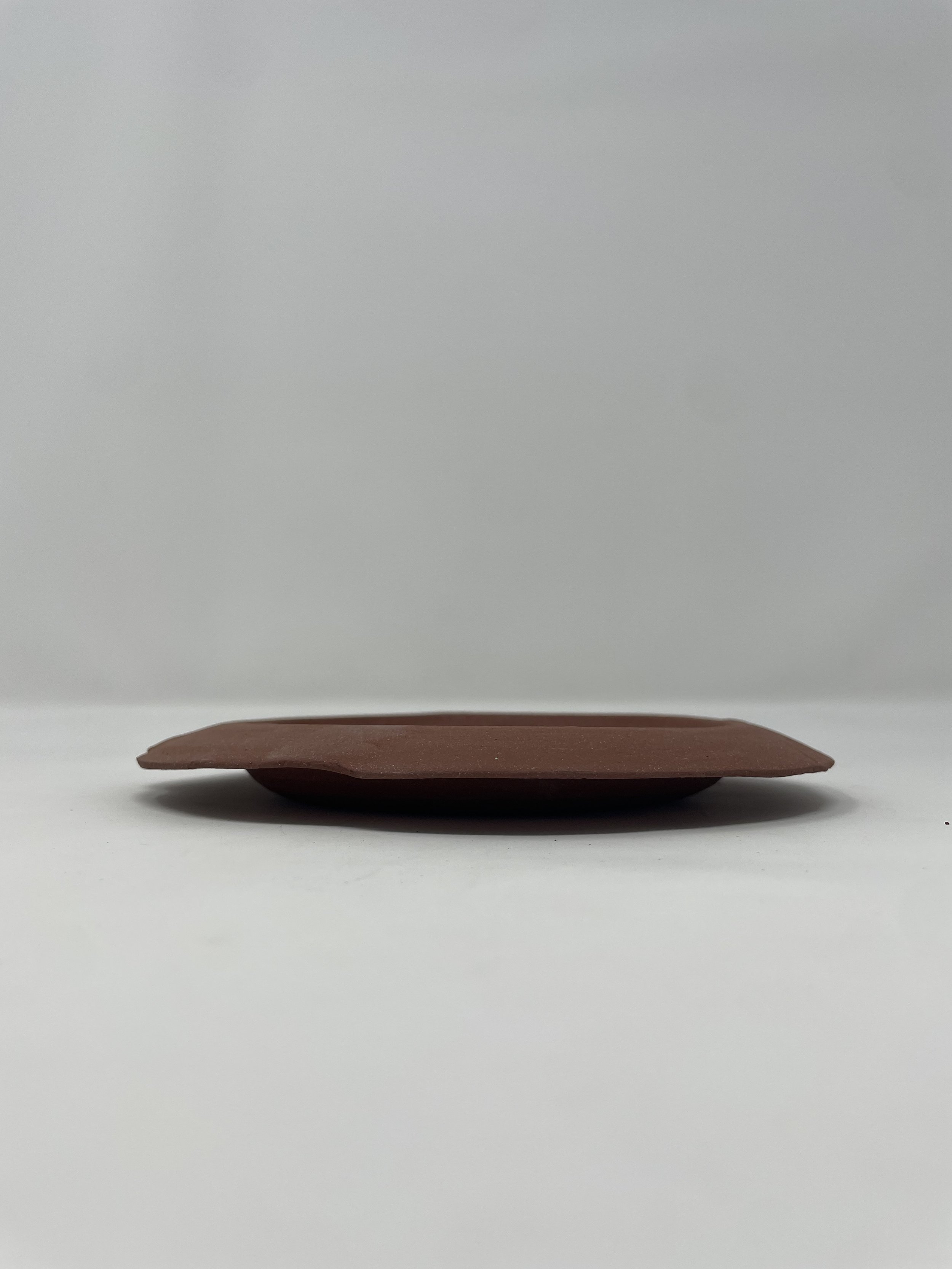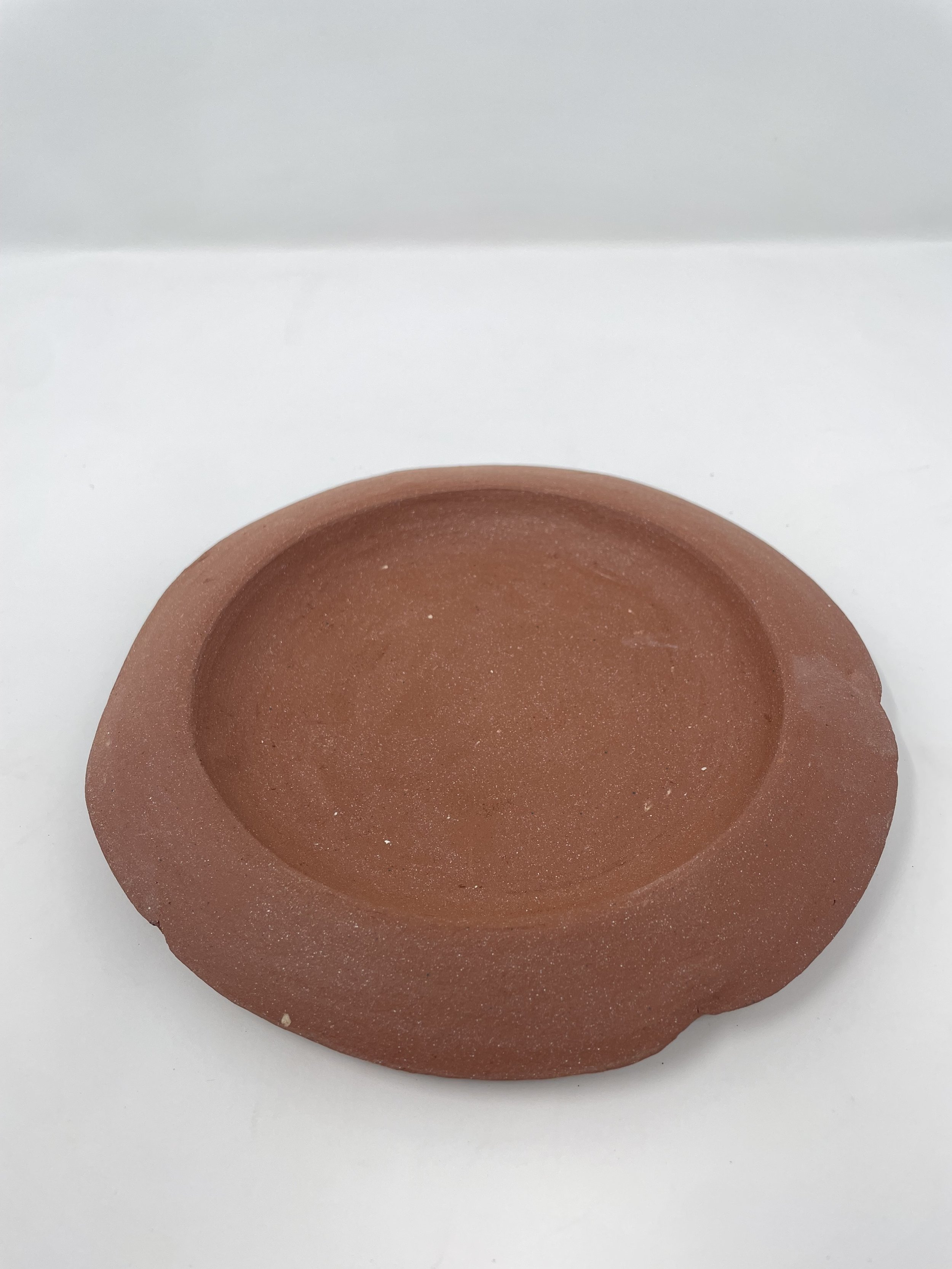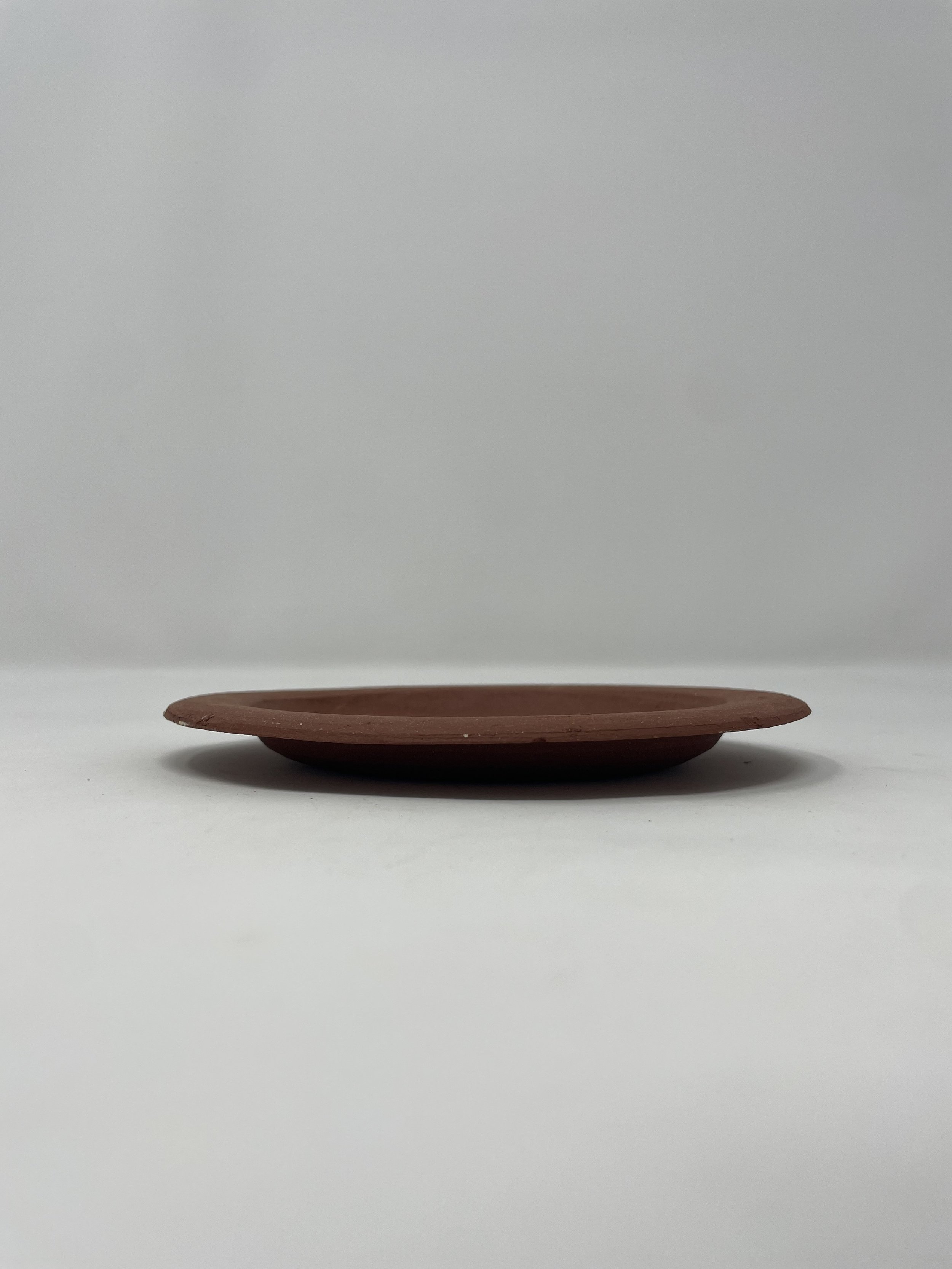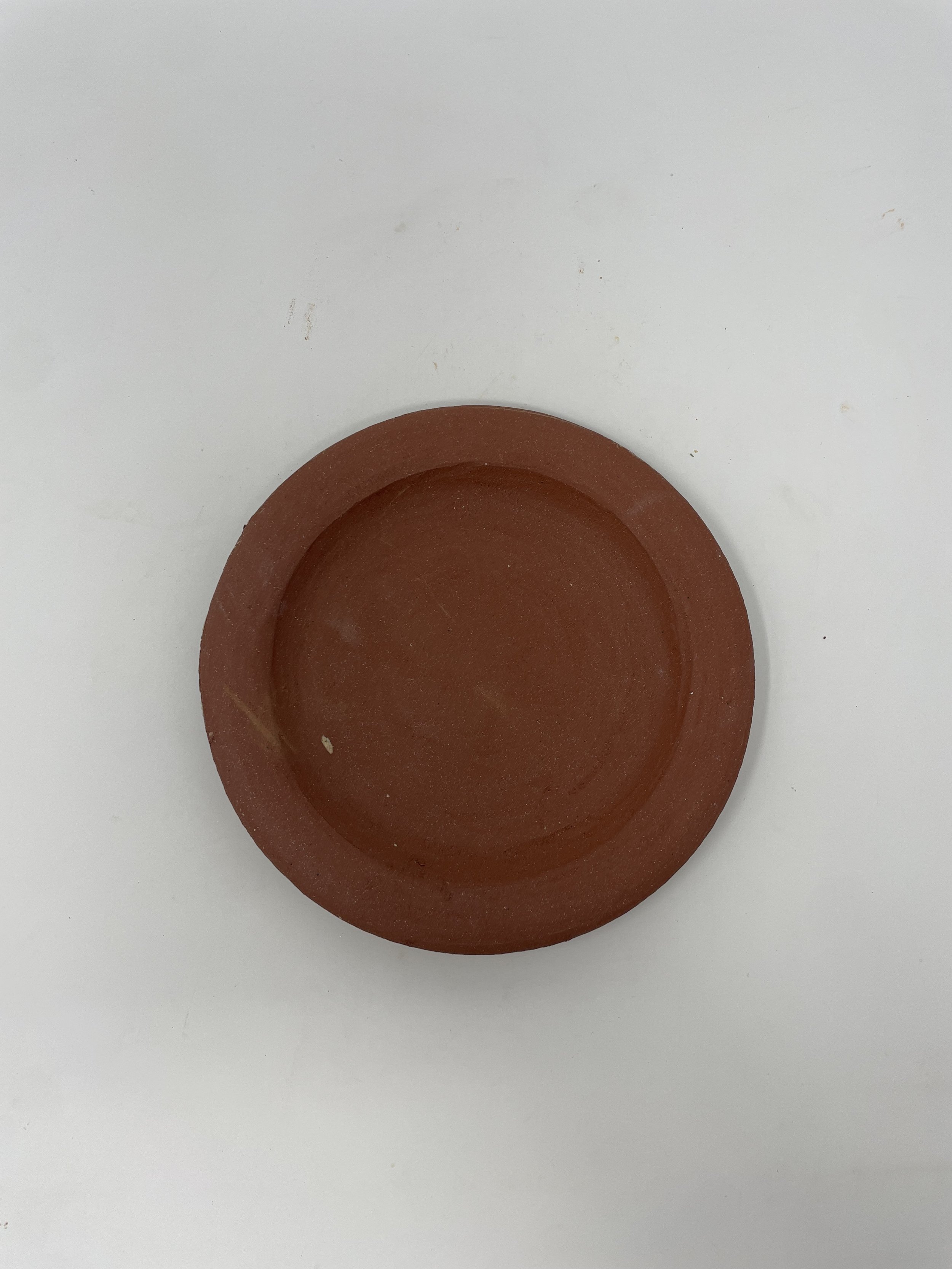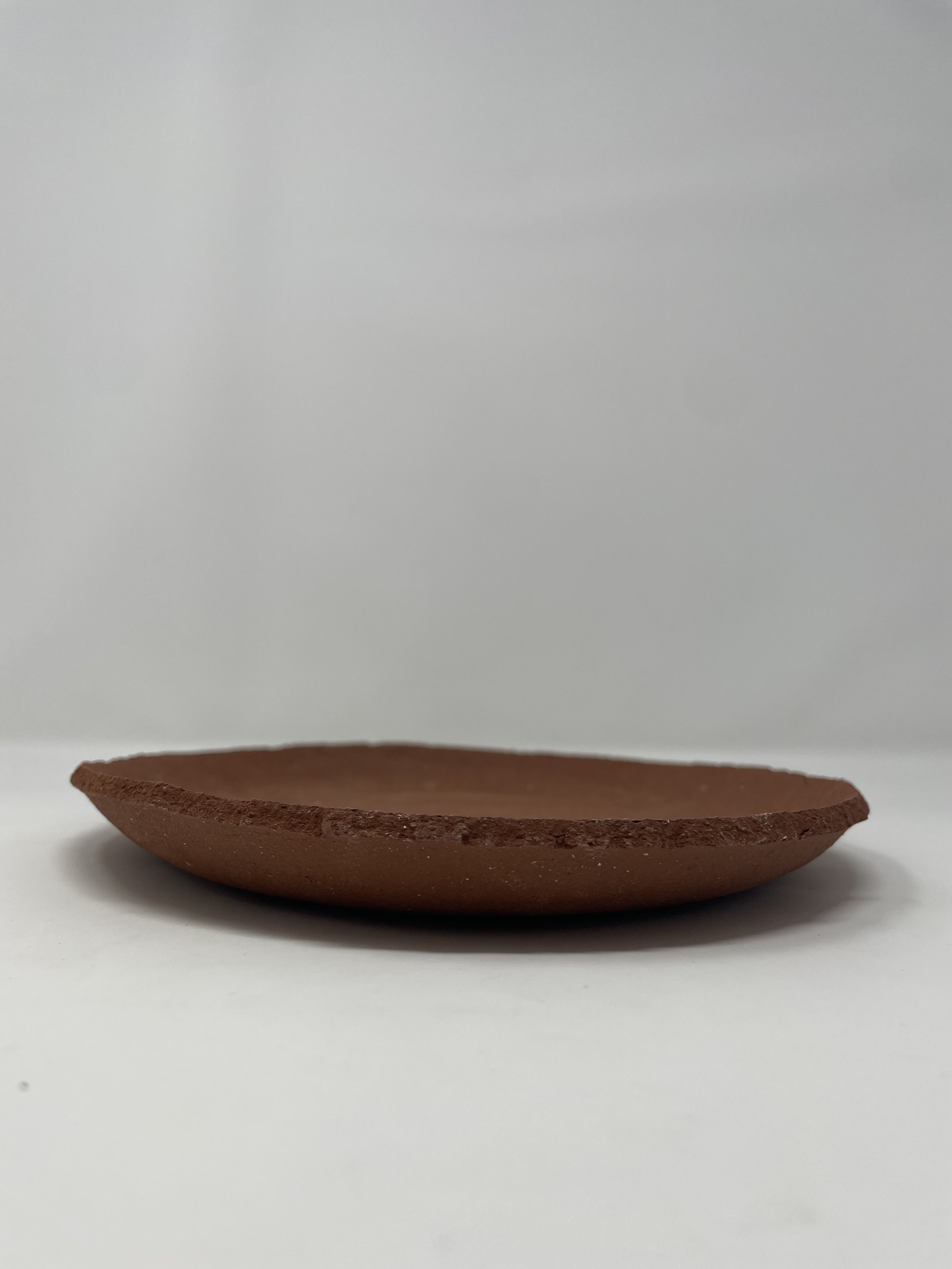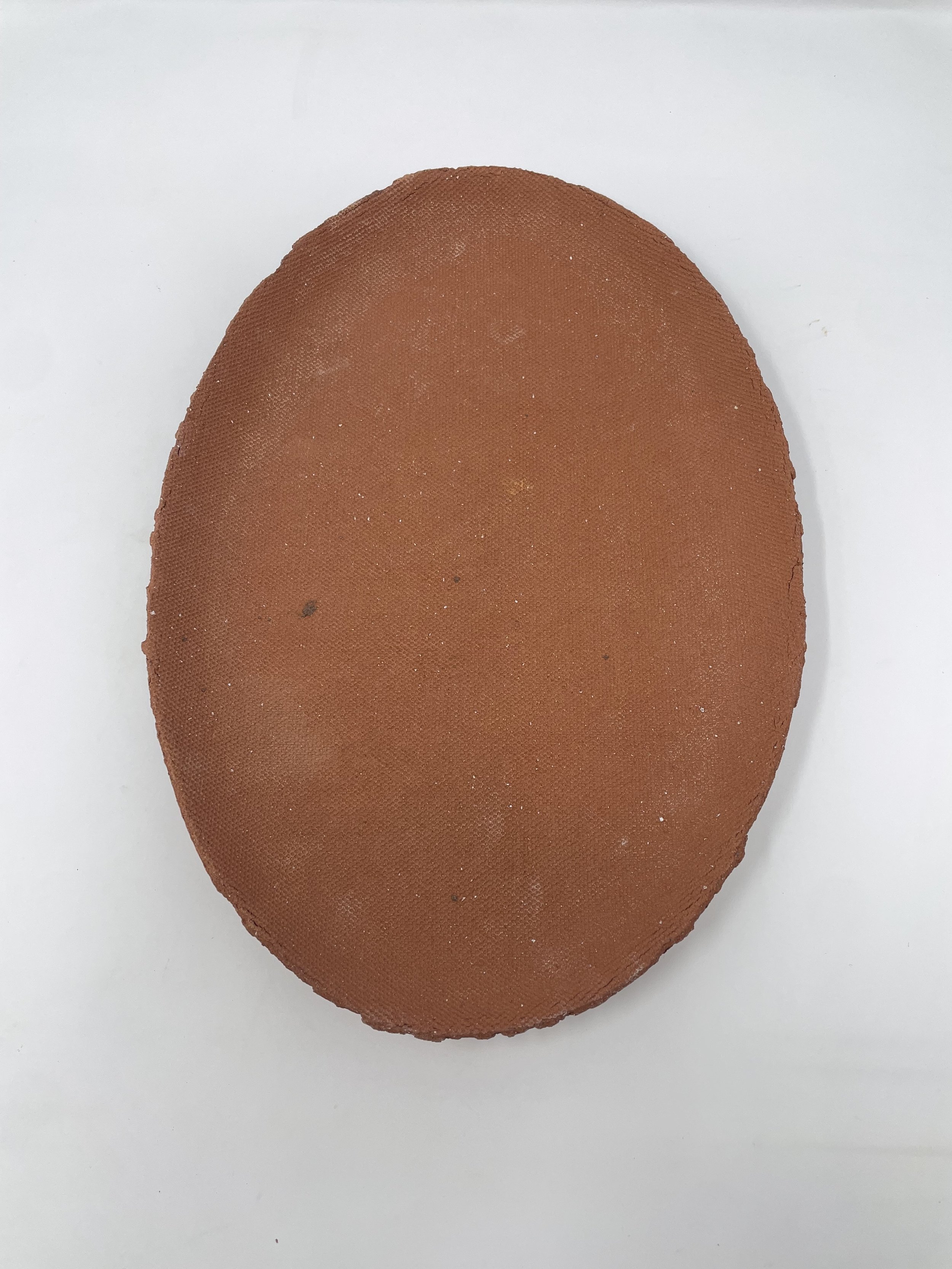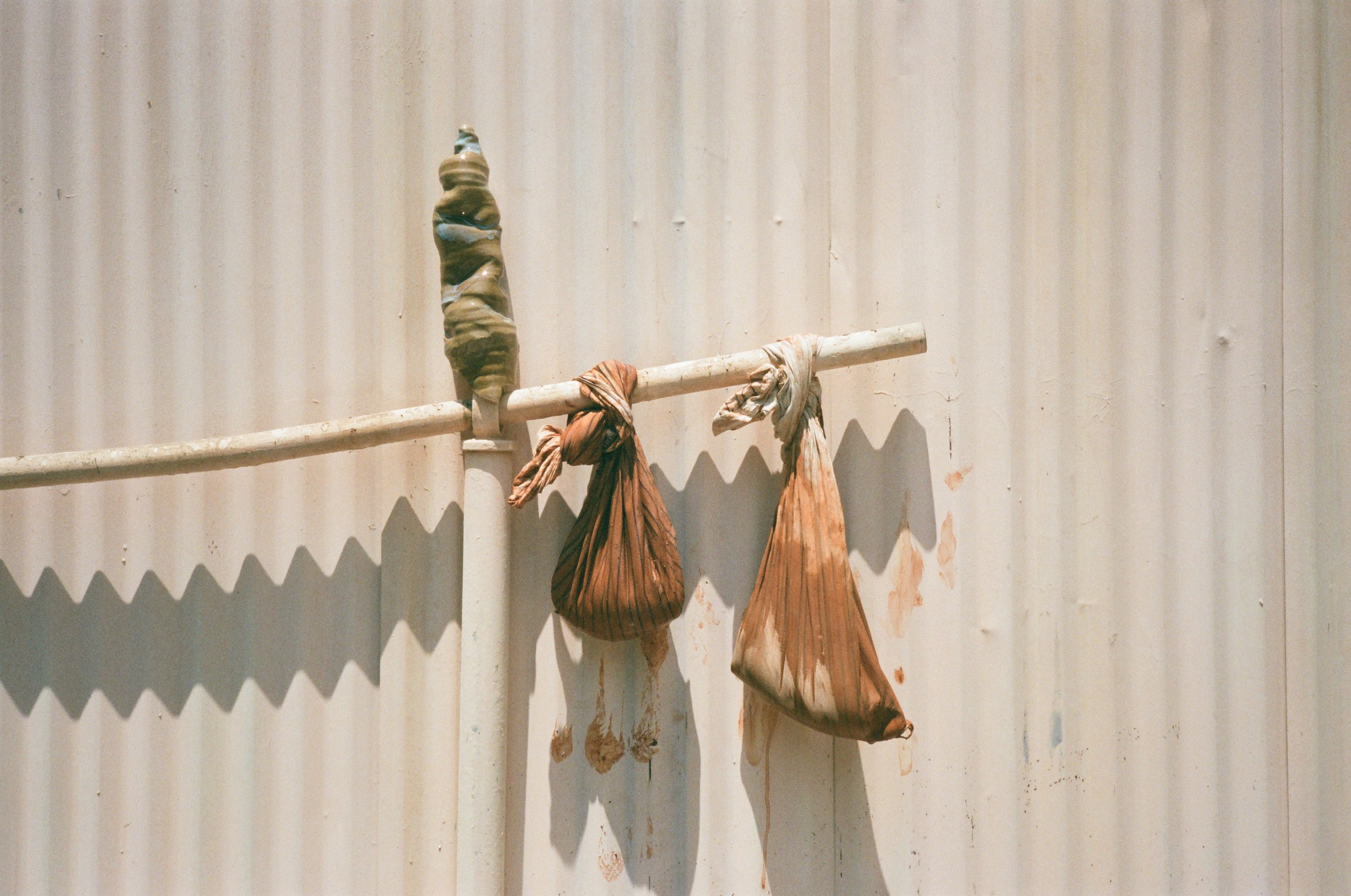
The Kiddush cup is a significant symbol in Jewish tradition, signifying the commencement of a special day or holiday when wine is poured into it, accompanied by prayers
While in Asheville (refer to 003.1), I conducted interviews with the elders of the local Jewish community. My focus was on understanding how Southern food culture had influenced this diaspora community, whether it had led to unique dishes and traditions. While I didn't uncover major changes in traditional foods, there were subtle variations. Additionally, everyday diets incorporated Southern classics like okra, fried chicken, sponge cake, oysters, pimento cheese, deviled eggs, and more.
My original intent was to use these interviews to design a dinnerware set tailored to Asheville's Jewish food culture. Unfortunately, due to time constraints and the technical limitations of the mica clay I was working with, creating functional, high-quality dinnerware that wouldn't stain, scratch, or crack proved to be too challenging. As a result, I shifted my focus to crafting a series of unique Kiddush cups instead.
I utilized new building techniques that were better suited to the “short” non-plastic nature of the mica-clay. I chose to throw the cups thicker on the wheel and then hand-trimmed them when the clay reached a leather-hard stage. I produced multiple different shapes that were inspired by traditional kiddush cups, and decorated some with patterns and images that I have collected from documenting Judaica from around the world.
The final phase of this project involves lending these cups to my local Jewish community, with the intention that the raw clay will gradually absorb the wine and develop a patina over time due to its slightly higher absorption rate. Later, I will collect all the cups and exhibit them collectively, showcasing the patina and their history of use.
My ceramic objects are designed to be utilized. These Kiddush cups, serving as ritual objects, are meant to be utilized in a specific manner. The resulting patina will document this use, enhancing the spiritual connection between the objects and those who use them.

